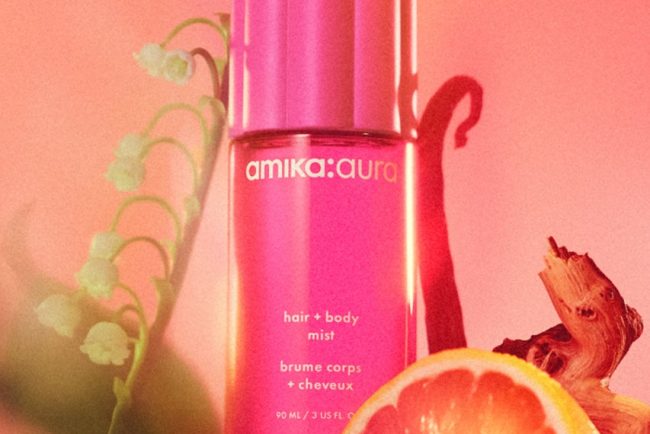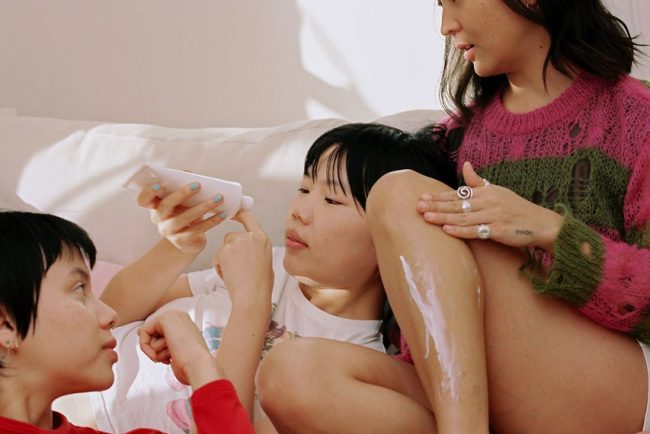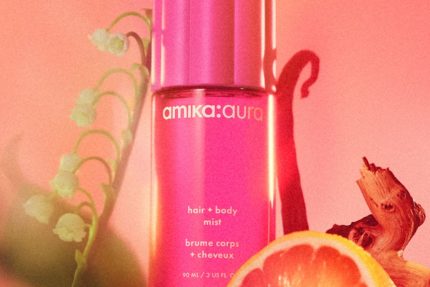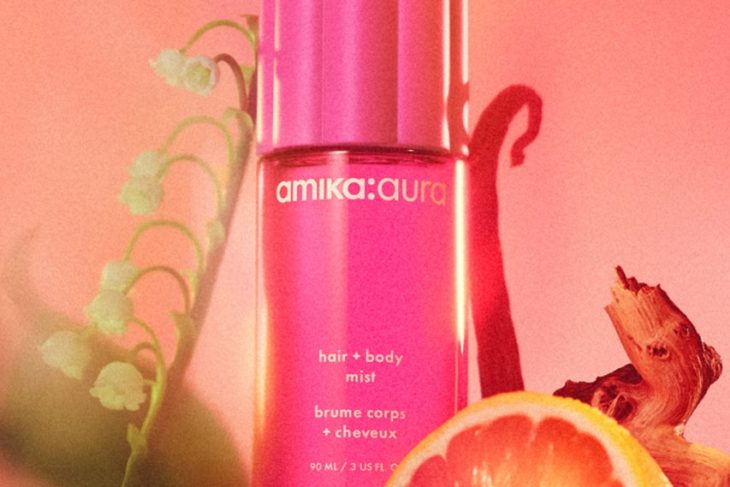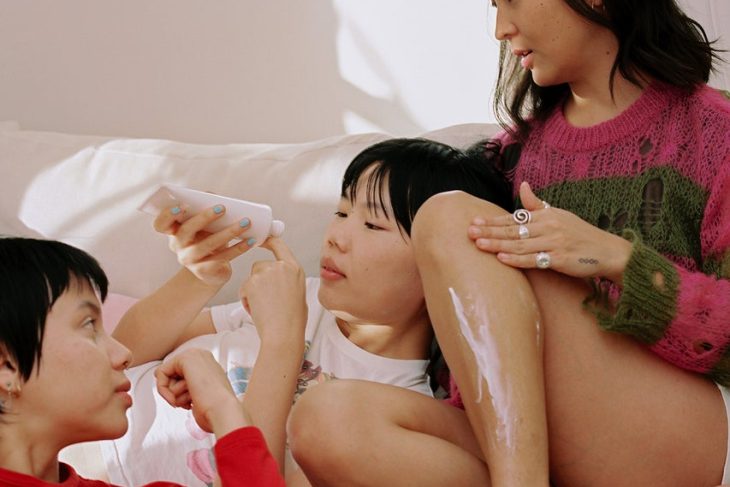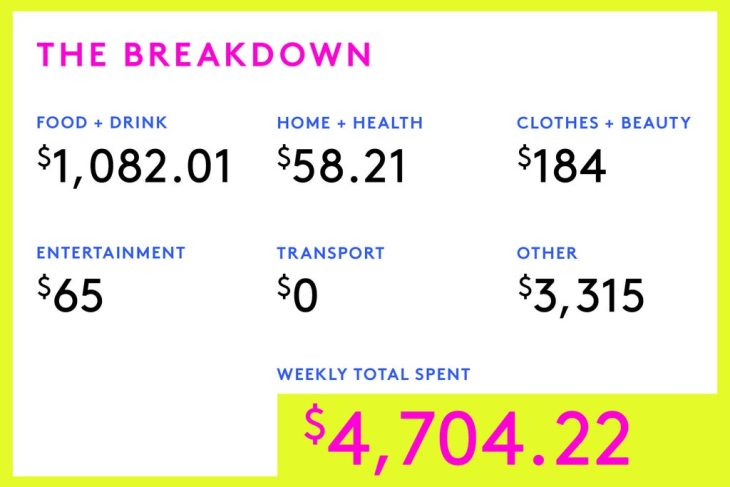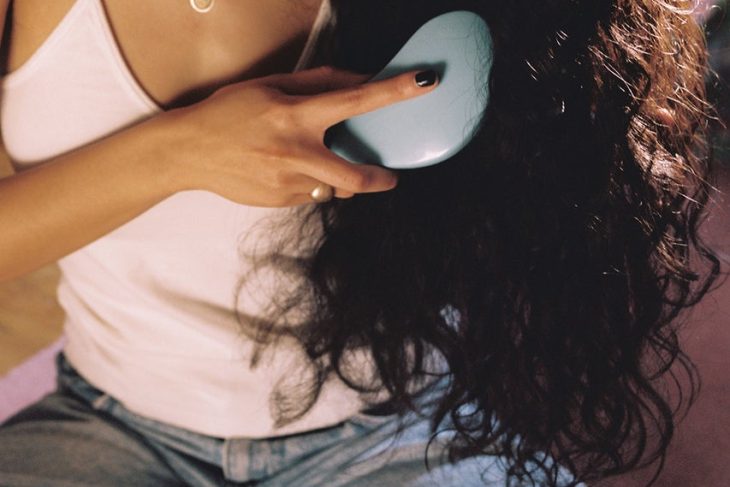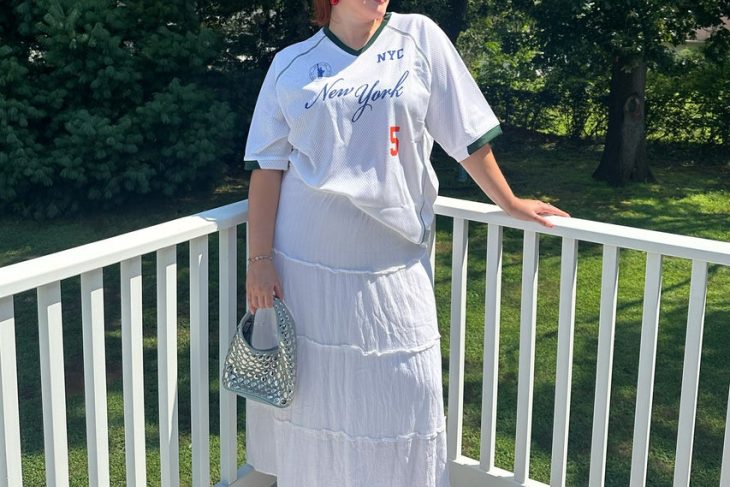
A Week In Willamette Valley, OR On A $140,000 Household Income
Welcome to Money Diaries where we are tackling the ever-present taboo that is money. We’re asking real people how they spend their hard-earned money during a seven-day period — and we’re tracking every last dollar.Today: a natural resource specialist who has a $140,000 household income […]
FASHION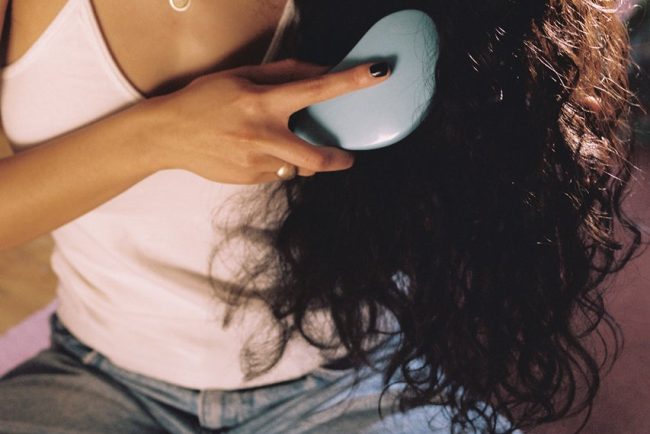
Wait, Can Drinking Matcha Really Trigger Hair Loss?
The matcha PR arc is nothing short of iconic. Once an unknown health drink, the powdered green tea quickly replaced the flat white as the wellness girlie’s beverage of choice. It didn’t stop there: matcha’s pastel green hue has infiltrated all corners of our lives, […]
FASHION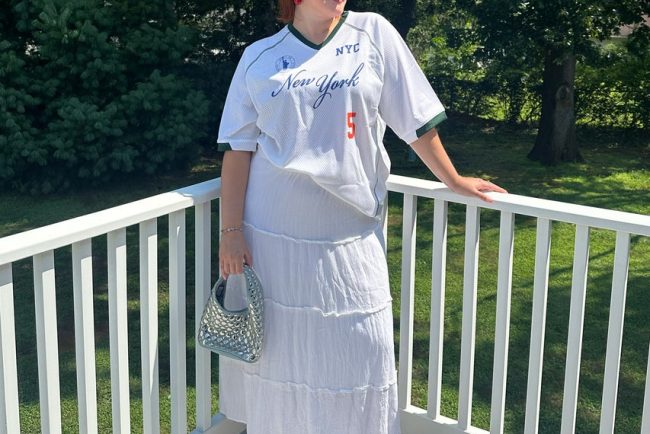
TikTok Made Me Do It: Soccer Jersey Outfits To Try Now
European soccer dominated sports bars and Instagram feeds this summer — especially with the Lionesses’ UEFA cup win and women’s soccer gaining more global momentum. Add in some major pop culture tie-ins (Ted Lasso’s fourth season announcement focusing on a women’s team, and a rumored […]
FASHION

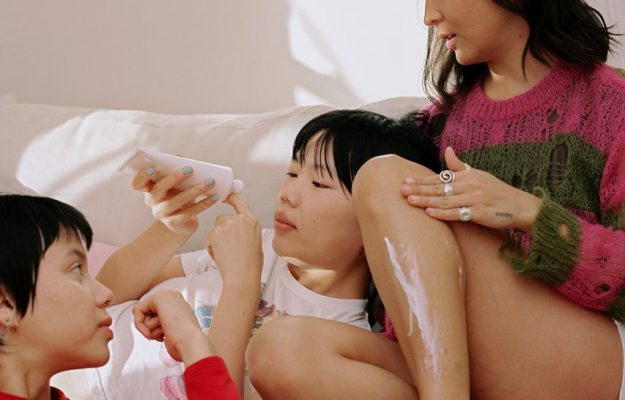
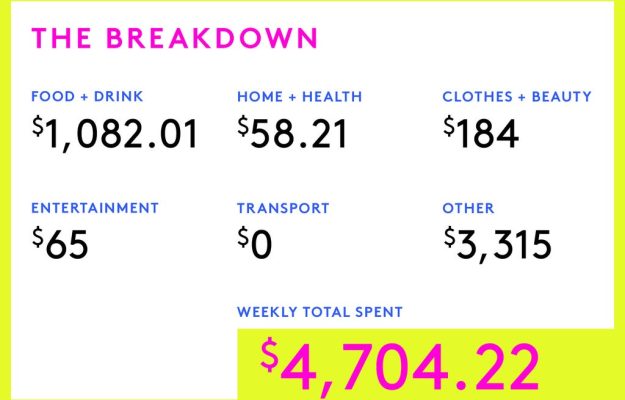
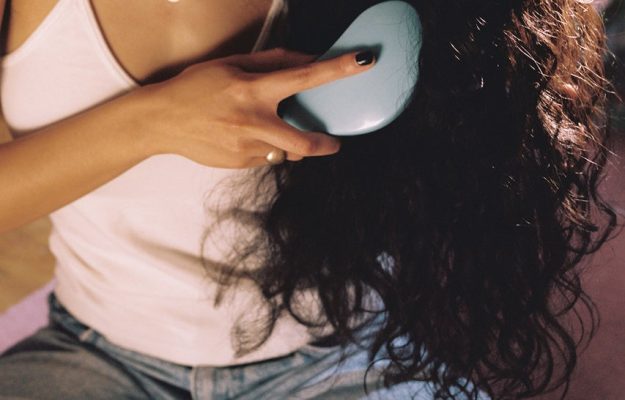
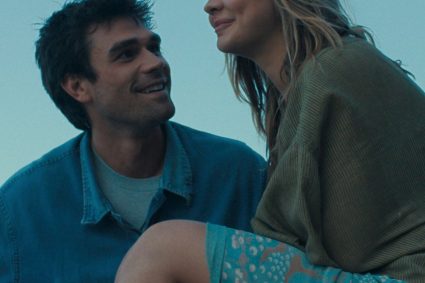
Madelyn Cline & KJ Apa On “Gut Wrenching” The Map That Leads To You
Spoilers ahead. There’s a moment in every Sick Teen (or young person) Movie when you know everything is not as it seems: a fragment of dialogue, a sidelong glance, or a fraught moment that indicates impending doom — that one of the two main love […]
FASHION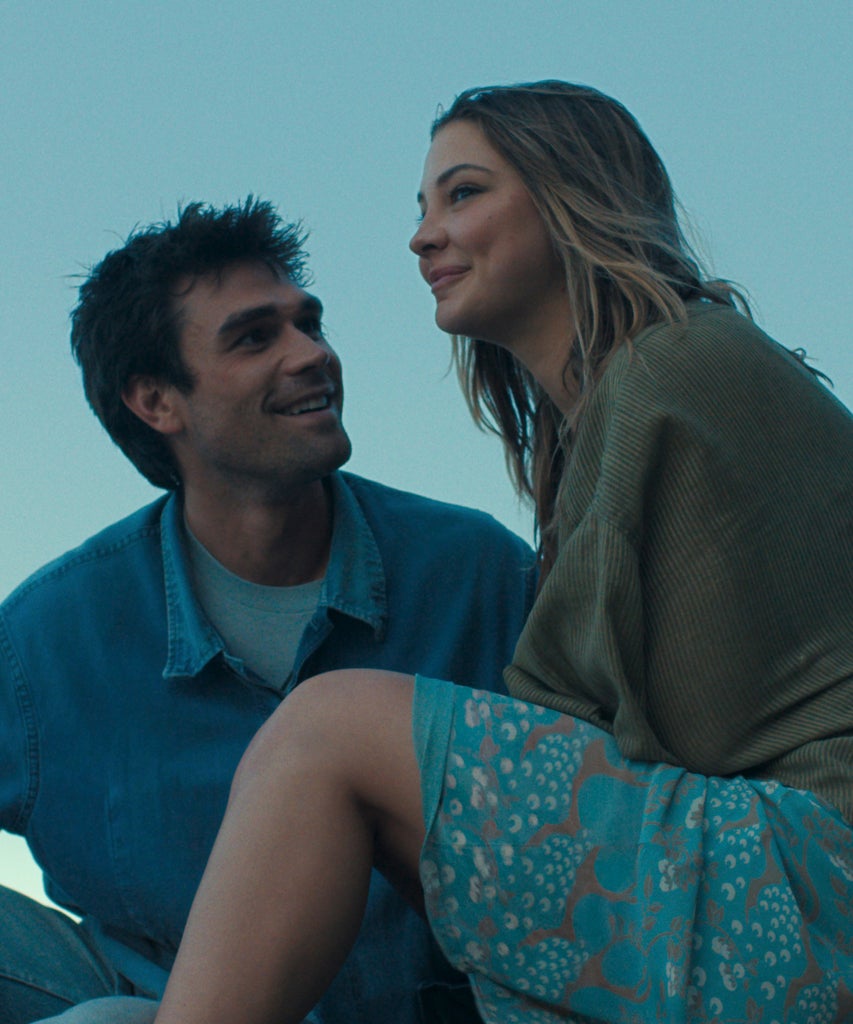
Spoilers ahead. There’s a moment in every Sick Teen (or young person) Movie when you know everything is not as it seems: a fragment of dialogue, a sidelong glance, or a fraught moment that indicates impending doom — that one of the two main love interests is not going to make it to the end of the movie. In 2002’s A Walk to Remember, it’s when Mandy Moore’s character Jamie boldly makes popular bad boy Landon (Shane West) promise to never fall in love with her. In 2014’s The Fault in Our Stars, it’s when Augustus (Ansel Elgort), at that point in remission from cancer, uses his Make-A-Wish wish to take girlfriend Hazel to Amsterdam to meet her dream author. More recently in 2025’s My Oxford Year, it’s the moment when professor Jamie (Corey Mylchreest) inexplicably pulls away from Anna (Sofia Carson) after their first night together.
In director Lasse Hallström’s newly released The Map That Leads to You, when Jack (played by Riverdale’s KJ Apa), who is on a whirlwind adventure through Spain with new love interest Heather (Madelyn Cline), refuses to be in a group photo with his friends (he thinks people should be experiencing the moment IRL instead of trying to document it for the future), viewers know there’s more to it than just camera shyness. The character, a 21st century rolling stone, has a track record for wanting to be in the moment instead of documenting it.
From the moment Jack bumps into Heather on a train to Barcelona in this adaptation of J.P. Monninger’s 2017 novel, he encourages the careful planner to embrace spontaneity. Heather is on her grand Euro adventure before returning home to a job in banking and a stable — albeit kind of boring — life, while Jack is on a quest to follow a route his great grandfather wrote about in his journal.. Heather, who maps out every moment of her life, ditches her rigid itinerary and regimented lifestyle to share the adventure, with the pair breaking into and spending the night in a tram car in Barcelona, chasing down passport thieves, adventuring around the coast, and running with the bulls in Pamplona. This chance encounter with Jack is pivotal for Heather, who discovers with him a sense of freedom she was missing and wants to continue following, both with him and on her own.
We wanted it to feel real and lovely and relatable, and we wanted it to be gut wrenching.
madelyn cline on ‘the map that leads to you’
And it’s this realization that makes the eventual reveal even more heart wrenching — Jack is ill and doesn’t know how much time he has left.
If that sounds familiar, it’s because it’s meant to. As Madelyn Cline tells Refinery29, Hallström told the actors to channel the essence of movies like A Walk to Remember and Before Sunrise (which doesn’t deal with death per se, but the tragedy of looming separation from the person you love). “We wanted it to feel real and lovely and relatable, and we wanted it to be gut wrenching,” Cline says.
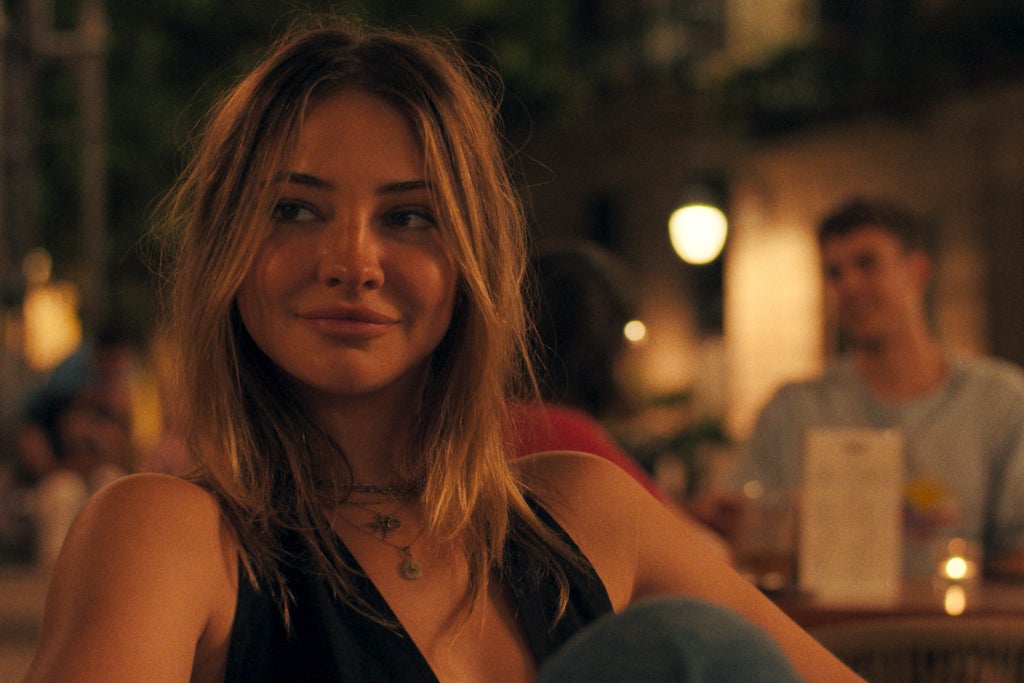
Most importantly, these stories leave the remaining character with a lesson: to go on and have a big life, all the richer because their lost love taught them to truly embrace life.
It can be a frustrating, albeit extremely popular, trope. The reason we continue to be drawn to these films about young people dying is arguably the same reason we wholeheartedly embrace teen shows dealing with grief or show and movies that scare us. They tap into some of our greatest fears: Dying young and not being able to fulfill your goals, while offering viewers a way to confront these fears head on. While death in any case is a tragedy, it’s exacerbated by the complexities of youth, as yet another issue young people have to grapple with along with the normal hardships of growing up, navigating your identity and trying to fit in. Having someone close to you die at a young age is scary and unexplainable, and at least in film and TV, viewers are able to see that these tragedies are not in vain, that something good comes out of death — because it has to.
Regardless of the reason why we’re drawn to these movies, the question remains: Do characters like Jamie and Augustus have to die in order for those around them to make the decision to live? Can’t we cherish life without the tragedy of death? Does loss have to be the price of appreciation?
It comes down to: Do you want to be happy or do you want to not be happy, irrespective of whatever is in front of you?
kj apa on his character jack in ‘the map that leads to you’
Cline says, for Heather, “It’s not [about] losing Jack, it’s about losing what he made her understand that she was missing from her own life.” In this case, it’s Heather understanding the power inside her can come from making her own decisions, rather than basing them on what is expected of her. “You don’t need a man to learn that lesson,” Cline says. But “[Jack] represents everything that she needed to learn for herself.”
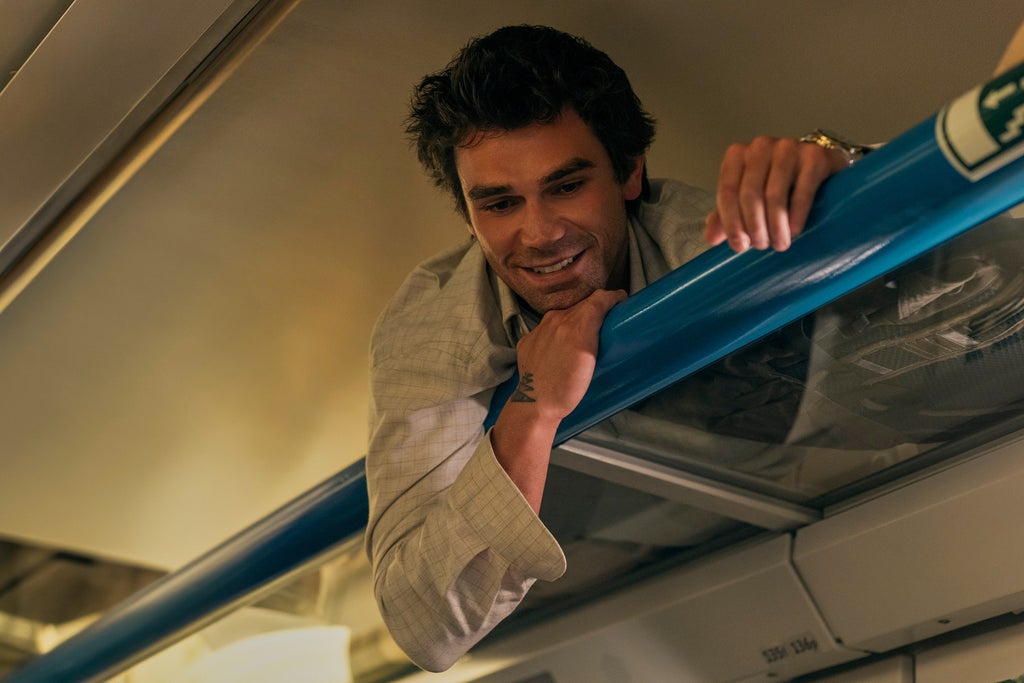
At first, Heather’s meticulously planned itinerary — and future — doesn’t leave any space for surprises, but by the end of the movie she realizes that “you don’t have to settle for any sort of status quo and you can be whatever you want,” Cline says. And more importantly, that you can find happiness and fulfillment in that. “Your thoughts do shape a lot of your reality,” Cline says. “Truly, you are a product of what you give energy to and what your thoughts are.”
But while these lessons may be more impactful when dealing with the loss of a young person, they’re also applicable to people at any age and in any life circumstance. “It comes down to: Do you want to be happy or do you want to not be happy, irrespective of whatever is in front of you?,” Apa says. “You can either have the perspective of, this sucks, I don’t want to do this, or I get to choose who I want to be in relationship to whatever it is that I’m doing.”
The key difference with this film is that, thankfully, Jack doesn’t die. Unlike most “Sick Teen” movies, The Map That Leads to You pushes beyond the typical trope. By having both characters make it to the end credits, it allows viewers to see the ways in which Heather has in turn also impacted Jack —and the lessons she can teach him, leaving viewers with a story in which both characters actively make a choice, instead of reacting to circumstances, to embrace their lives, whatever comes next.
It’s an updated take on the typical trope, and one that, while not necessarily always pulled off without coming across as cheesy or earnest, is appreciated; at least for its attempt to eschew the unequal dynamics of these relationships and show how both characters, Jack and Heather, can learn from each other.
“Heather and Jack are two sides of the same coin,” Cline says. “Where Jack has based his decisions off of why is this happening to me and Heather is the one who approaches it with gratitude.”
After initially trying to push Heather away, for fear of having her watch him die, Jack is forced to follow his own advice: respecting Heather’s decision about her future— one that, at least for now, includes him — and choosing gratitude for what they have together.
“She teaches him the final and probably most important lesson,” Apa says, “which is [that] you don’t get to make that decision for me or anyone.”
“That’s his pivotal moment,” Apa says. “Him dealing with this illness and really coming to terms with the fact that life is impermanent, and what do you do with that information?” Which is the question that the movie leaves both Jack and Heather, not to mention viewers with — and to figure out for themselves.
The Map That Leads to You is now streaming on Prime Video.
Like what you see? How about some more R29 goodness, right here?
Ilfenesh Hadera Is Highest 2 Lowest's Secret Weap
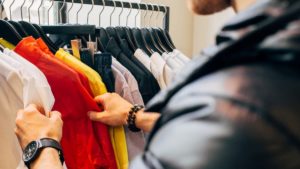
Good, Better, Best — Reducing Textile Waste in 2025
This is the fourth in a series of articles providing options for reducing the amount… The post Good, Better, Best — Reducing Textile Waste in 2025 appeared first on Earth911.
EcoTechThis is the fourth in a series of articles providing options for reducing the amount…
The post Good, Better, Best — Reducing Textile Waste in 2025 appeared first on Earth911.

Best of Sustainability In Your Ear: Project Censored’s Andy Lee Roth on Under-Reported Environmental Stories
In today’s media environment, disinformation and distraction are pervasive. The most troubling issue may not… The post Best of Sustainability In Your Ear: Project Censored’s Andy Lee Roth on Under-Reported Environmental Stories appeared first on Earth911.
EcoTechIn today’s media environment, disinformation and distraction are pervasive. The most troubling issue may not…
The post Best of Sustainability In Your Ear: Project Censored’s Andy Lee Roth on Under-Reported Environmental Stories appeared first on Earth911.

Sustainability In Your Ear: Author Kelsey Timmerman’s Journey to Find Farms Regenerating Earth
The scale of agriculture’s environmental impact is staggering. According to the EPA, agricultural runoff is… The post Sustainability In Your Ear: Author Kelsey Timmerman’s Journey to Find Farms Regenerating Earth appeared first on Earth911.
EcoTechThe scale of agriculture’s environmental impact is staggering. According to the EPA, agricultural runoff is…
The post Sustainability In Your Ear: Author Kelsey Timmerman’s Journey to Find Farms Regenerating Earth appeared first on Earth911.
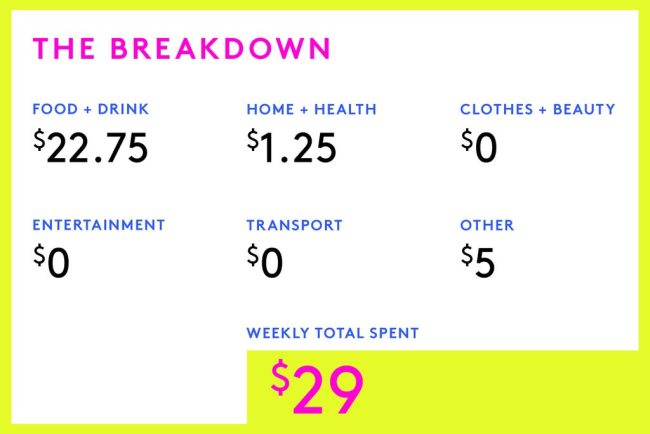
A Week In Ecuador On A $18,897 Salary
Welcome to Money Diaries where we are tackling the ever-present taboo that is money. We’re asking real people how they spend their hard-earned money during a seven-day period — and we’re tracking every last dollar. Today: a rural medical doctor who makes $18,897 per year […]
FASHIONWelcome to Money Diaries where we are tackling the ever-present taboo that is money. We’re asking real people how they spend their hard-earned money during a seven-day period — and we’re tracking every last dollar.
Today: a rural medical doctor who makes $18,897 per year and who spends some of her money this week on online submission for a short story (she enjoyed writing it so much she might do it again next month!).
Editor’s Note: All prices converted to US dollars using Google and correct at time of writing.
Occupation: Rural medical doctor
Industry: Healthcare
Age: 24
Location: Ecuador
Salary: $18,897.36
Assets: Savings: $7,562.52; retirement funds: $5,040.44; medical residency savings: $2,522.08 (I’m saving to apply in 2027). I am the shareholder of a company that my father cofounded when I was little. When he passed away, I inherited a small percentage of his shares, and they were worth approximately $75,000 at the beginning of this year. They might be worth more now as the company has grown significantly, but we won’t know their value until the end of 2025. Besides that, my mom gave me a car for college that I still own and that is worth around $10,000 (I might sell it once I start applying for residency).
Debt: $7,500 from student loans.
Paycheck Amount (Monthly): $1,116.21 + $458.57 (from my company shares).
Pronouns: She/her
Monthly Expenses
Housing Costs: $100 (including electricity, internet and water services). Because of the location of my job, I work on a special schedule: I work for 18 consecutive days and get 12 resting days. While in my community, I rent an apartment with a rural dentist, who also works with me. I live with my mom for the rest of the month for free (and my mom pays for most of the groceries and gas during my stay as well).
Loan Payments: $458.57
Gym membership: $81
Running Training Program: $85
Cell Phone: $0 (I’m in the company phone program for shareholders).
Disney+ & Spotify: $0 (paid for by my mom).
Health & Retirement Insurance: $95.15 taken automatically from my paycheck (this is a combined service our government offers to every citizen, so you can contribute monthly for public healthcare services but also for your retirement).
Monthly Psychology Appointment: $40
Savings: $590. I transfer $500 to my residency savings account and save the rest to indulge in small luxuries such as clothing or short trips every once in a while.
Was there an expectation for you to attend higher education? Did you participate in any form of higher education? If yes, how did you pay for it?
Education has been a priority in my family for decades, so no one ever thought of me not going to college. Being the daughter of doctors inspired me to attend medical school in my hometown when I was 18. In Ecuador, the degree lasts six years, and you can go straight into it after high school. My mom and grandparents have been very supportive regarding my education and paid for most of my degree until my little sister got into college as well. Having two daughters in private universities on her own (since my dad passed away when I was 12) was too expensive for my mom, so I had to take out a loan for my last two years of school.
Growing up, what kind of conversations did you have about money? Did your parent(s) educate you about finances?
My mom taught me about finances from when I was a teen. While in high school, she would give me a monthly allowance based on a budget I had to present to her in a spreadsheet. Besides that, most of the conversations we had were about the importance of saving and planning. She was always recommending books and courses on personal finances that I never took seriously, but now that I am starting to make my own money, I wish I used the resources she offered me when I had more free time.
What was your first job and why did you get it?
During my last year of medical school, as part of my degree, I did an intern year where I worked at a hospital, supporting residents and attendings on anything they need. I got paid around $500 monthly, and I used this money to pay for all my personal expenses besides housing and basic needs that my mom still covered for me. I also saved some money that I later spent on traveling abroad with my friends as a graduation gift from myself.
Did you worry about money growing up?
I think the most I worried about money growing up was after my father passed away. For the first couple of years, I saw my mom struggling to pay loans and medical bills from my dad’s disease (he had cancer) while being the head of the household, and that made me worry as well. As the company my dad cofounded began to do well and my mom educated herself on personal finances, we eventually began living a very comfortable life. Although I almost stopped worrying about money after that, to see my mom stressed so much those first years definitely impacted me, and it became a reminder that life can change drastically when you least expect it and you have to be aware of that, but you also have to trust you can be resilient enough to overcome whatever life throws at you.
Do you worry about money now?
As I am planning to apply for residency in two years, I definitely worry about money now. I want to become a specialist abroad, which means I have to save a certain amount of money for traveling and studying, and I keep that in mind every time I feel like spending a little extra money on things like concerts, expensive dining or clothes. However, my mom has offered to help me so I can fully focus on this objective in 2026. This means I won’t work for a year until I get into the program I want. While I am so lucky my mom is willing to support me and I am going to contribute with more than half of the expected expenses for this process, I still feel guilty about it.
At what age did you become financially responsible for yourself and do you have a financial safety net?
To pursue a medical career means that there is a big chance that you won’t acquire complete financial independence until your early thirties (or later). Although I began paying for all of my personal expenses last year, I feel like this is the first year I am financially responsible for myself (though I live with my mom for some days of the month). I am very grateful for having my mom and grandparents as I know that they could help me financially if I need some help, especially for the next few years. I also know I could sell my car or my company shares in extreme, emergency situations.
Do you or have you ever received passive or inherited income? If yes, please explain.
When my father passed away, I inherited some things, including part of a house that we eventually sold to buy a house in a nicer neighborhood, and the company shares that I still own. The money I receive from them monthly has always been used for educational purposes (including exchanges and summer programs in other countries that have definitely been life-changing). As previously mentioned, when I started college, my mom bought me a car so I could go anywhere on my own while she spent more time with my little sister without worrying too much about me. My grandparents also gift me around $500 each year for my birthday and Christmas that I mostly use for more costly personal expenses (such as running gear or traveling), and whenever they are in town they offer to pay for my groceries. Finally, my mom contributed monthly to a retirement fund for me when I started medical school. Once I began contributing for it during intern year, she stepped out, but I am so grateful for her amazing support on this (and everything else).
Day One: Sunday
5:10 a.m. — Rise and shine! I text my coworker J. to let him know I am awake and getting ready for our run. I am currently training for a 30km trail running race, and J. has been my training buddy since March. Today we have to run for 90 minutes, so I take two squares of dulce de guayaba and fill a flask with coconut water to bring with me.
5:40 a.m. — We start running towards a nearby community. Although cloudy, the weather is perfect, and we encounter different animals throughout our route. From cattle to birds to lots of dogs that run with us, time flies and we are having fun!
7:10 a.m. — I am back home ready to start the day. I decide to treat myself to breakfast since I successfully completed all of my workouts of the week — I buy an empanada and some chocolate milk to eat with eggs and ham. I also indulge in a Gatorade that I drink while doing some stretching exercises before hitting the shower. $1.35
12:30 p.m. — After attending to a couple of patients at the Centro de Salud where I work, which kept me busier than expected, it is lunchtime, and my coworkers and I decide to eat out today. We walk to our favorite place — a family-owned BBQ restaurant that sells the best ribs I have ever tasted. We order some ribs and sausages, fried potatoes and salad, and guanabana juice. They serve us big portions and we leave the place very satisfied. We never regret coming here. $4
5 p.m. — We close the center and go home. Our community is so small, we can go anywhere by walking. We discuss if we should get doughnuts or not, but we finally decide we can eat them another day. As A., my roommate, and I arrive home, we realize the bakery ran out of doughnuts today. I guess faith did not want us to have dessert after all.
5:15 p.m. — I snack on dark chocolate-covered rice cakes dipped in vanilla Greek yogurt before doing some chores. I go to the roof to check on the clothes I washed a couple of days ago and find them a bit humid. We don’t have any laundry machines here, so we have to wash everything manually and then let them dry by hanging them on the rooftop of our building (is it a building, though? There are only two floors). I decide to let my clothes dry for one more day and go downstairs to deep clean my room and bathroom while watching Once Upon a Time (I have been obsessed lately).
7 p.m. — I make some fish and salad for dinner. Though I am not hungry, I know I have to fuel my body properly during these intense training days, so I try to make it a priority. I eat while I chat with my sister, who is studying in Mexico, about her graduation next year. I will definitely travel to this event and am already excited!
8 p.m. — I start writing this diary while eating some tortilla chips. I take my time to carefully check my assets and expenses while listening to the F1 movie soundtrack on Spotify. I can’t wait to go back to the city to watch it at the cinema.
10 p.m. — I take some magnesium, brush my teeth, wash and moisturize my face, and apply a leave-on conditioner on my hair before going to sleep. I scroll on social media before finally closing my eyes.
Daily Total: $5.35
Day Two: Monday
6:55 a.m. — It is a rest day today, so I sleep in a little longer. I get ready for work before cooking one of my favorite breakfasts: a Greek yogurt bowl with apples, raw oats, and peanut butter. I eat a fried egg on the side to add some extra protein.
11:30 a.m. — I take a quick break from work to go buy a snack at the grocery store. I buy Rollitos ($0.25 — my favorite snack since I was a kid) and some toothpaste ($1.25). $1.50
1:30 p.m. — I take my lunch break a little later and am starving. I decide to make a homemade burger with fries on the side and salad with all of the vegetables I find in my mini fridge. Thanks to my air fryer, it takes me 15 minutes to get it done, and I enjoy it slowly for the rest of the hour.
6 p.m. — After a nice and long nap, I wake up to revise respiratory anatomy and pharmacology. Since I am going to start studying for residency exams in September, I have been trying to check the diseases we see the most here to adapt myself into studying again. Every time I study while working, I wonder how on earth I was able to study for more than eight hours, go to classes, train, and have a social life while in medical school.
7:30 p.m. — I take a break from studying to make some oatmeal pancakes for dinner. I add lots of syrup, bananas, and peanut butter as toppings. I love breakfast for dinner.
8:30 p.m. — After two intense study hours, I decide it’s time to rest. I do my night time routine while watching an episode of Once Upon a Time. When it is over, I immediately fall asleep.
Daily Total: $1.50
Day Three: Tuesday
5:40 a.m. — I wake up and get ready for the hour-long run I have to do today. This run is a splendid one. Living in the middle of the forest means listening to different animals and rivers throughout the way, and it makes me feel very connected to nature.
7:30 a.m. — I eat two scrambled eggs and bacon with instant oatmeal, Greek yogurt, peanut butter, and blueberries for breakfast. I also drink a big cup of coffee and coconut water to hydrate from my run before heading to work.
12 p.m. — It is lunchtime and I am RELIEVED. Many patients came in the morning and I didn’t even have time to drink water. I arrive home and let some whole wheat fusilli cook before going upstairs to soak my clothes in detergent. I have to do my laundry in the afternoon and want to have it ready to rinse. Once the pasta is done, I assemble a tuna salad with it.
1 p.m. — I text K., who lives close to me, to let her know I am leaving home. She takes the same lunch hour as me and we like to walk together to work. We stop to get some ice cream on the way — this is the hottest day we have had since arriving, and it feels like the perfect excuse for a sweet treat. $0.25
5 p.m. — After taking care of some patients and doing half of a mock test for residency, it is time to close the Centro de Salud. Today, we decide we should get some dessert and head to the ice cream shop. A., K. and J. get chocolate cake and ice cream while I get a donut from the bakery. We chat for a while with some people from the community as we enjoy our treats. $0.50
7:15 p.m. — I finally finish doing my laundry. I do a quick leg workout before getting a shower and making dinner. Today, I make homemade nachos, and they are amazing. I use my last can of chili beans, so I add them to my grocery list for next month. The village I work in is considered “difficult access”, which means that very few cars, buses, and trucks arrive due to the distance from any big city and the state of the unpaved road. When it rains, it is impossible for any vehicle to arrive. This also means that there is not a lot of variety in stores, so I bring almost 80% of what I eat from my hometown. Every time I come here, you can tell which are my bags since they are always massive and super heavy from all the food and cleaning supplies I bring!
9:30 p.m. — I have some tea before falling asleep. This was a productive but tiring day.
Daily Total: $0.75
Day Four: Wednesday
5:55 a.m. — I am out of the house ready for my run. I have to do a very specific zone-two workout but struggle to keep my heart rate low, so I walk a lot in between. J. does a tempo run, and I time his fastest kilometer — he wants to join the army and running is a part of the physical test he has to take. From the results we have been getting, I think he will nail it.
7:30 a.m. — I make banana oatmeal with two scrambled eggs and ham for breakfast. I only had a few Moritas (blackberry-shaped gummies) for my workout this morning and am starving. A. and I take the trash out before going to work.
11 a.m. — J. and I decide to take a coffee break and get mochaccinos. There are no cafeterias in the village, so we choose some packaged ones from the grocery store. They taste like dessert, and we drink them slowly while checking on the requirements he has to fulfill to join the army. Moments like this are what make life good. $1
12:30 p.m. — I am about to go to lunch when I realize I left the keys of my room inside of it. I panic. I go talk to the woman who is in charge of the building when our landlady is away to ask her if she has a copy of it. She is not sure if the landlady took them away with her and we won’t know until around 7 p.m. I panic more. I go eat leftover chili beans and sautéed potatoes while thinking what to do. If there are no keys, I might have to change the whole lock set. I go to the hardware store to check on prices and find someone who can help me to change it if needed. After that, I feel better and go back to work. I have a solid Plan B now that hopefully won’t be too expensive to execute.
3:30 p.m. — I attend to the last patient of the day and finish the test I started yesterday. I make a list of topics to revise tonight from the questions I failed. K. asks her boyfriend if he knows how to open doors without keys and he says he can give it a try. We agree on meeting him after work in case our landlady doesn’t keep the keys here. I am hungry, but I skip the grocery store and decide to eat at home instead — I might have to buy a lock set today after all.
5:20 p.m. — Today is my lucky day: They had the keys here and my room is open! I sigh in relief and apologize to everyone involved for the inconvenience. K. decides to go home, and I thank her and her boyfriend for their support and willingness to break my door if required. I snack on some ham and Moritas while updating my family about it.
7 p.m. — I eat lunch leftovers from yesterday while checking the topics from my mock test. I am struggling to focus and don’t know if I will be done by tonight. I give myself some grace and take a break to catch up with friends and family via WhatsApp. After all, I am still months away from starting to formally study. I snack on some tortilla chips and realize I have been snacking more than usual. I definitely need to increase my nutritional intake since I have been running more, so I start to think about healthy snack ideas to prep for next month.
9 p.m. — I finish my study session and start checking for grammar mistakes in this diary. To write more is one of my main 2025 resolutions: It is an activity I have loved since high school, but I stopped doing it at some point. I had a creative block last month and didn’t write anything, so I have been enjoying this exercise a lot. It has even inspired me to write some stories once I finish this!
11:11 p.m. — I felt so inspired I just wrote a short story based on a trip I took years ago (I found a writing prompt online and decided to give it a try). I send it to my sister and mom to get their feedback before going to sleep.
Daily Total: $1
Day Five: Thursday
7 a.m. — I wake up and start getting ready for the day! I feel tired yet excited about the story I wrote last night. I head downstairs to get some bread at the bakery and buy a recently baked cacho (the Ecuadorian version of croissants) to eat with scrambled eggs and Jamoneta. $0.20
12 p.m. — After a slow morning, I go buy potatoes and mayonnaise for lunch. I am not sure what I will be cooking but my stomach is feeling like getting potatoes today. I also get some fried pork meat. $0.60
2:30 p.m. — My coworkers and I realize we just got paid! Since there are no scheduled patients in the afternoon, I start organizing my monthly expenses. I add $500 to my savings account immediately and pay rent and my fitness memberships for next month. I also place the money for my therapy appointment next week and for groceries in a separate account so I won’t spend it until I need to. The satisfaction I get from this is unbeatable.
6 p.m. — After scrolling on TikTok for an hour, I do a 50-minute leg workout from YouTube that my running coach sent me. I don’t use any weights but my legs are burning. Shoutout to Caroline Girvan for such an amazing routine!
7:30 p.m. — My friends and I meet to get dinner. We buy salchipapas, corviches, and ice cream for dessert. We start discussing all things food and almost all of us agree the coastal region has the best Ecuadorian cuisine (K. disagrees though — she loves hornado too much). $2.65
9 p.m. — I call my mom and sister on our group chat and talk for an hour. I also chat with my best friend from school who is working in the Amazon jungle. Then I immediately fall asleep.
Daily Total: $3.45
Day Six: Friday
5:35 a.m. — I wake up feeling tired and still full from last night’s dinner. Still, I text J., get ready, and eat an apple before meeting him to go running.
5:55 a.m. — J. is not only tired, but exhausted from last night. Apparently, he couldn’t fall asleep and took a pill that is making him feel dizzy today. We decide to not force ourselves by running and go on a short hike instead.
7 a.m. — I feel better and more energized to go to work now. I play a Juan Luis Guerra playlist on Spotify while getting ready to feel more motivated and it works immediately! Of course, I start by listening to my favorite song of his, “Como Yo”. I eat my usual breakfast: eggs with ham and oatmeal with Greek yogurt.
12 p.m. — I finish editing the short story I wrote a few days ago and love it. Reminiscing about this one trip from when I was younger was a beautiful experience. Going to India helped me become the person I am now in many different ways, so I get very emotional whenever I navigate towards my memories of it. My mom and sister encourage me to submit it for a chance to get it published in a magazine, and after seeing the application fee is not that expensive, I decide to give it a go. $5
1 p.m. — I go to the grocery store to buy avocados but unfortunately they are not ready to eat yet. Instead, I get cream cheese, dulce de leche, and Grillé wholewheat toasts. I am transitioning into the time of the month when my groceries start running out, so I start to improvise my meals using whatever is available here. I realize they have one bottle of natural (not Greek) yogurt and buy it immediately. This is the first time I have seen one of those in the village! $4.60
5:10 p.m. — After a stressful day, I get home and put on my pajamas. I feel like resting this afternoon, so I plan on watching a marathon of Once Upon a Time. I make an early dinner of papihuevo and toast with cream cheese and dulce de leche. I also drink some electrolytes that taste like pink lemonade. It really is about the small things in life.
7:45 p.m. — K. calls me to let me know there is an emergency in the Centro de Salud. Part of our special schedule includes attending any urgent situations with patients outside of our normal schedule (which rarely happens). A. and I walk there, and after the initial assessment, I realize it is not really an emergency. I prescribe the patient pain medication and tell her to come back tomorrow morning for a full assessment. I am glad it is not severe. After it, my friends decide to go have dinner in another community, but I choose to go home instead. I am also transitioning into the time of the month when I start to feel very tired from working so many consecutive days, therefore I want to recover properly today. After another episode of Once Upon a Time, I fall asleep.
Daily Total: $9.60
Day Seven: Saturday
6 a.m. — I wake up early to do the last batch of laundry of the month before going back to the city. I am doing half of it today and then the rest tomorrow morning. Once I am downstairs, I go get ready and make myself a yogurt bowl and scrambled eggs for breakfast.
8 a.m. — We will not see any patients for the next few hours, in order to do inventory. We revise all of the medications, tests, and medical equipment and make a list that includes expiration dates of everything to make sure we use everything safely. I enjoy doing different activities every once in a while, and it is a perfect excuse to rest for a bit while still being productive in my workplace.
10:30 a.m. — I buy some Doritos at the grocery store although I am not really hungry. I was really craving some and they are really good. #NoRegrets. $0.60
1 p.m. — I don’t feel like cooking, so today I am going to eat lunch in one of the “comedores” of the village. I get a complete lunch for $3 that includes soup, main course, and juice. I choose to eat yawarlukru and ribs, and it is truly phenomenal. I leave home for a quick nap before going back to work. $3
3 p.m. — K. preordered tres leches from the bakery and it is dessert time! It is perfect. No more comments. $1.50
5:15 p.m. — It is workout time. Today, I have to run for 90 minutes before doing some exercises for knee stability. I take some electrolytes and a square of dulce de guayaba with me, as well as a flashlight in case it gets dark. Before going out the unbelievable, yet predictable, occurs: the zipper from my running belt breaks! I improvise a belt by placing everything in a bag as fast as possible. I will have to try to get it fixed once I am back in my hometown (ps: by predictable, I mean PREDICTABLE: My belt is more than five years old, and I knew it was a matter of time before it started falling apart).
7:30 p.m. — Even though the run was tough, I felt very strong from the beginning. The weather was beautiful, and I cannot emphasize enough on how beautiful the landscapes are here. I am truly obsessed and feel blessed to experience living in such a special area (I am surrounded by different national parks and reserves), regardless of the burdens that come from being in a place of difficult access. I arrive home to do the exercises my trainer sent me and some stretches before hopping in the shower.
8 p.m. — I feel so tired I have to force myself to leave my room and get dinner. I go to the grocery store to buy some bottled water, Gatorade, and two apples for tomorrow. I eat some pasta tuna salad I had in the fridge and start rehydrating until I feel I am coming back to life. $2.25
8:30 p.m. — I read a few chapters of Animal Farm by George Orwell. I read it in high school and thought it would be interesting to reread it now that I am older, but I regret bringing such a small book here: I read more than half of it the first night I came, and, as you can imagine, there are no libraries or bookstores here, so I can’t acquire more reading material once I finish it (and reading on my computer is not an option — I am a paperback girlie). Last month, I brought Sunrise on the Reaping and it was long enough to read it from start to finish here. I get distracted by thinking about what to read next, based on my current experience.
9 p.m. — I am too tired to do anything besides sleeping. I do my night routine and lights are out. I guess Animal Farm can wait one more day!
Daily Total: $7.35
The Breakdown
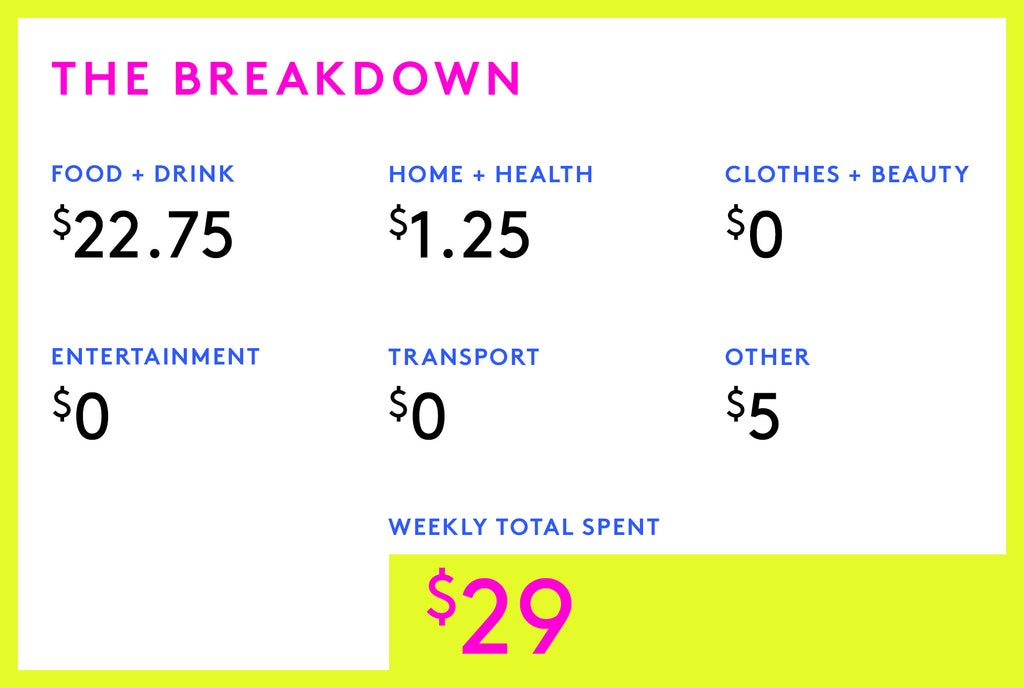
Conclusion
“I think this was a very average spending week for me when I am in my village. When I’m at home, my expenses are similar in quantity but I spend more money on entertainment, dining, clothes, and beauty rather than on everyday needs. Since I am saving as much money as possible for residency, I have been intentionally budgeting since I started this job. Therefore, I have a very solid perspective on my expenses, but writing them in this format was really informative as I could see where I could plan better, especially with food. After writing this diary, I started buying healthier snack options in my hometown to have here and my spending on sweet treats has dropped a lot. I even feel less bloated and more energized! It has been a win-win from all perspectives. I also thought of this as a gratitude exercise since I usually compare myself with other friends my age and sometimes feel frustrated about my current situation (the rural year I am doing is mandatory for all healthcare graduates in order to legally practice medicine in Ecuador). By writing this diary, I realized I actually like my job and life a lot.
“I think it is very important to let everyone know that my assets and lifestyle (even in my village) are not a reflection of the majority of Ecuadorians. I come from an educated, very supportive, upper middle class family — a privilege that less than 10% of the population has. Especially in areas like where I am now, people live with less than a dollar a day, and at least half of the patients I attend do not finish high school (and I have not attended one patient with higher education yet). Before coming here, I always thought that there might be a way to make things better for all of us, but now that I am so close to the life conditions of the majority of our population, I am not sure about that. For now, I try to focus on how I can continue my education to help as many people as possible while preserving my mental health. My frustration not only comes from feeling stuck in the long pathway of becoming a doctor, but also from seeing pain and suffering daily with limited resources to help out.
“On happier news, the short story I wrote was actually chosen to be published! Best investment I have made this year so far.”
Money Diaries are meant to reflect an individual’s experience and do not necessarily reflect Refinery29’s point of view. Refinery29 in no way encourages illegal activity or harmful behavior.
The first step to getting your financial life in order is tracking what you spend — to try on your own, check out our guide to managing your money every day. For more Money Diaries, click here.
We’ve updated our Money Diaries submission process: You can now submit your Money Diary via our online form or by sending us a bit of information about you and your financial situation to moneydiary@refinery29.com. We pay $150 for each published diary. Apologies but we’re not able to reply to every email.
Prior to submitting your Money Diary, please read and consider Refinery29’s Terms of Use and Privacy Policy. Submission of your Money Diary does not guarantee publication by Refinery29. Should your Money Diary be selected for publication, Refinery29 may, in its sole discretion, elect to pay you a fee, subject to such further terms and conditions as Refinery29 may deem necessary. Money Diaries that are not published are not entitled to receive any payment. Refinery29 will not remove Money Diaries once published. By submitting your Money Diary to Refinery29, you agree to abide and be bound by the applicable Terms of Use and Privacy Policy linked above. All submissions need to be original to the author (i.e., no AI contributions).
Have questions about how to submit or our publishing process? Read our Money Diaries FAQ doc here or email us here
Like what you see? How about some more R29 goodness, right here?
A Week In Washington, DC On $247,760
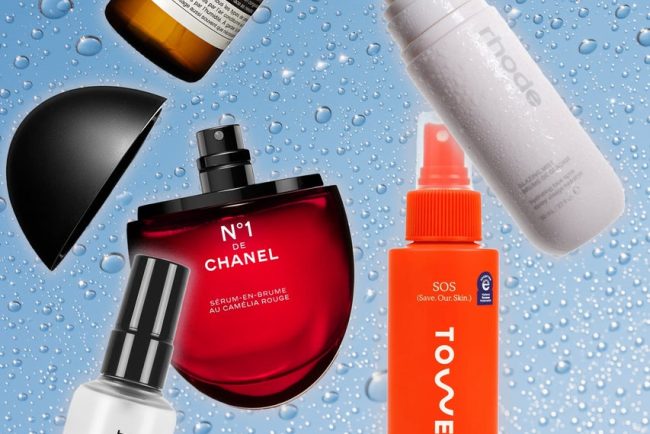
I Tried $295 Worth Of Face Mists & This Is The Best One For Hot Weather
Face mists have come a long way. Once thought of as fancy water in a spray bottle (that doesn’t do much beyond making your skin feel nice), they’ve enjoyed quite the renaissance in recent years. That’s all thanks to innovative formulas armed with efficacious ingredients […]
FASHION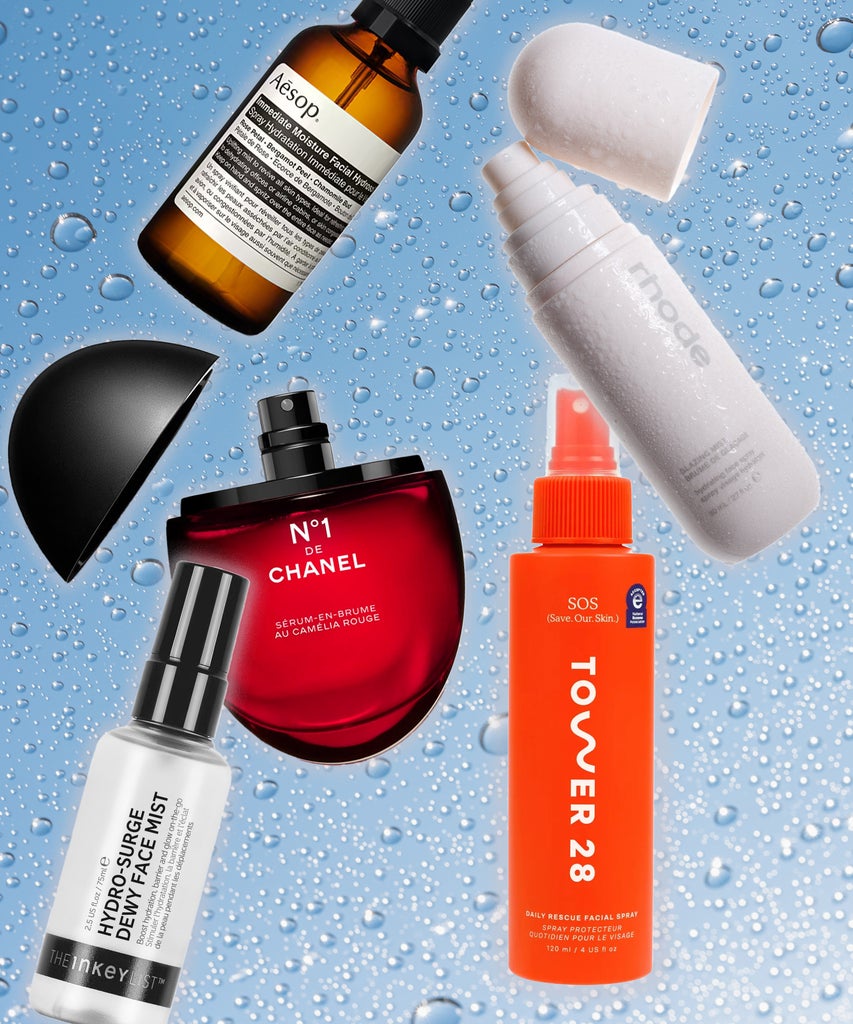
Face mists have come a long way. Once thought of as fancy water in a spray bottle (that doesn’t do much beyond making your skin feel nice), they’ve enjoyed quite the renaissance in recent years. That’s all thanks to innovative formulas armed with efficacious ingredients you’d find in a hydrating serum or moisturizer, like glycerin and hyaluronic acid. Beyond providing an instantly refreshing sensation, the face mists of today also promise to replenish moisture, soothe irritation, and even cast a long-lasting dewy finish over makeup.
Misting is also an effective step to prepare your face for better skincare absorption. “A lot of people immediately pat their faces dry with a towel after their cleansing routine, so using a face mist puts that moisture back into your skin,” says medical and cosmetic doctor Ewoma Ukeleghe. “You’re starting with a hydrated base again, which creates better grip for products [in the rest of your routine].” If you struggle with dry or sensitive skin, face mists are a great way to add lightweight hydration without using your hands — and risking further irritation.
Without further ado, read ahead for our tried-and-tested lineup of face mists that deliver real skin benefits alongside a cooling spritz, starting at $12.
Rhode Glazing Mist, $30
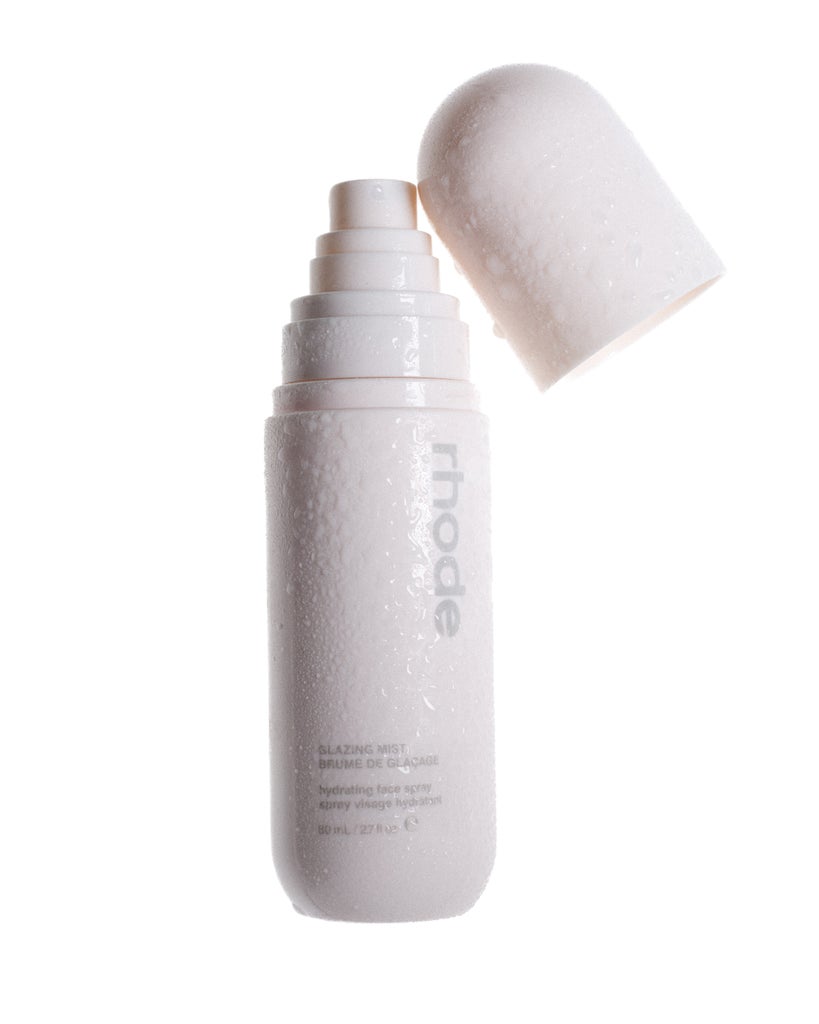
This product has been hyped to the max — TikToks of Rhode muse Harris Dickinson and that gigantic silicone face mist holder were everywhere for a while — and I’m happy to report that all the buzz is justified. Out of all the mists I’ve tried, this one hits the nail on the mark with an airy, non-greasy texture that also feels substantially moisturizing. It contains a laundry list of skincare ingredients I always look for in my serums, including ectoin (which binds moisture to the surface of the skin), a trio of ceramides (they strengthen the skin barrier), and vitamin B5 (which amplifies the moisturizing benefits of the other ingredients). My skin feels immediately quenched, and the effects of this lasts long after the mist evaporates. The applicator gets a 10/10 from me, as it evenly moistens the skin without any wet patches. It’s an all-arounder that can be used before and after makeup, and is my favourite by far.
Tower 28 SOS Daily Rescue Facial Spray, $28
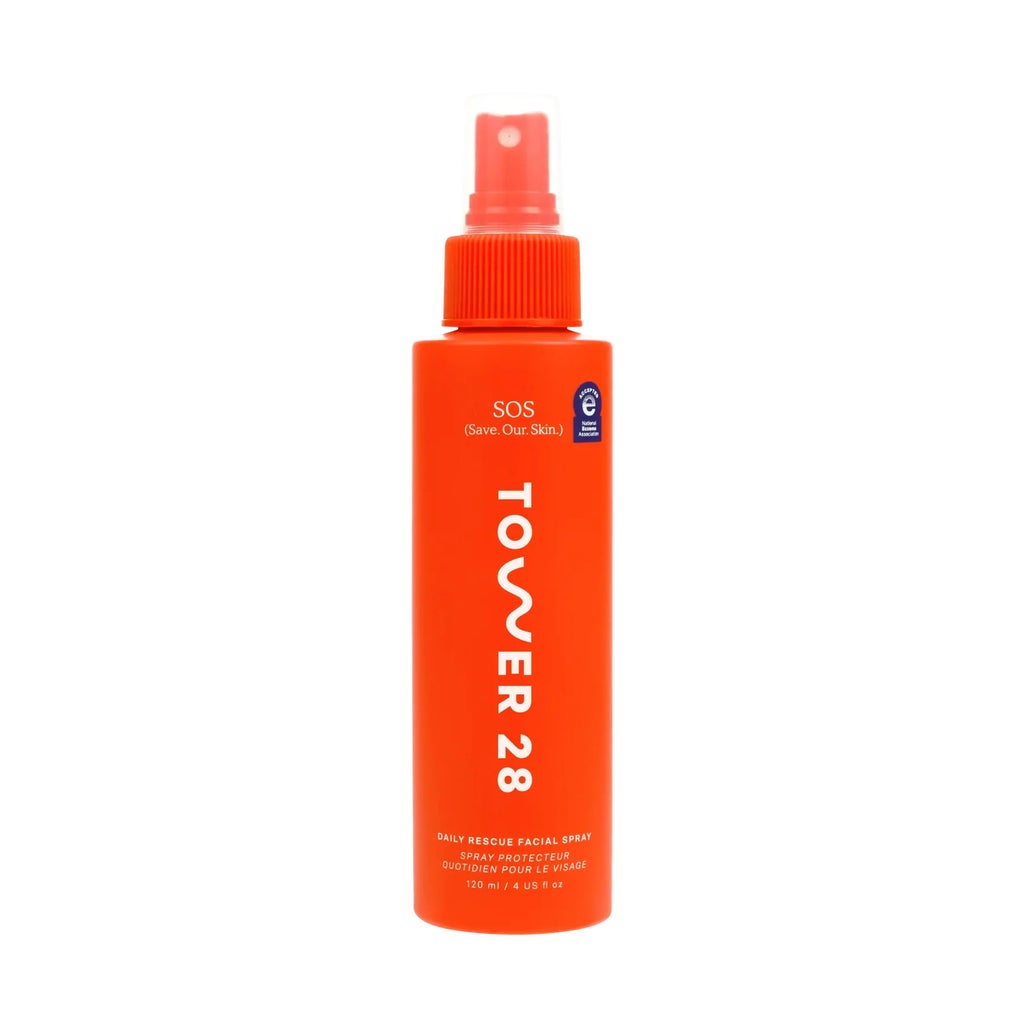
I have combination skin and this facial spray is what I’ve relied on for years to keep my breakouts in check. It stars hypochlorous acid, a naturally occurring antibacterial ingredient that helps calm redness and soothes inflammation. I spray this on very hot days or after a workout, after I’ve been sweating buckets and a breakout might be on the horizon. This might be TMI, but the spray has also come in clutch when I’ve had a minor infection on my eyelid, as the anti-inflammatory properties of the spray help lessen the irritation. Since hypochlorous acid is pretty much the only ingredient, I’d say that it’s not quite as moisturizing as the others, but I’d highly recommend it for acne-prone skin.
Chanel No. 1 de Chanel Serum-in-Mist, $120
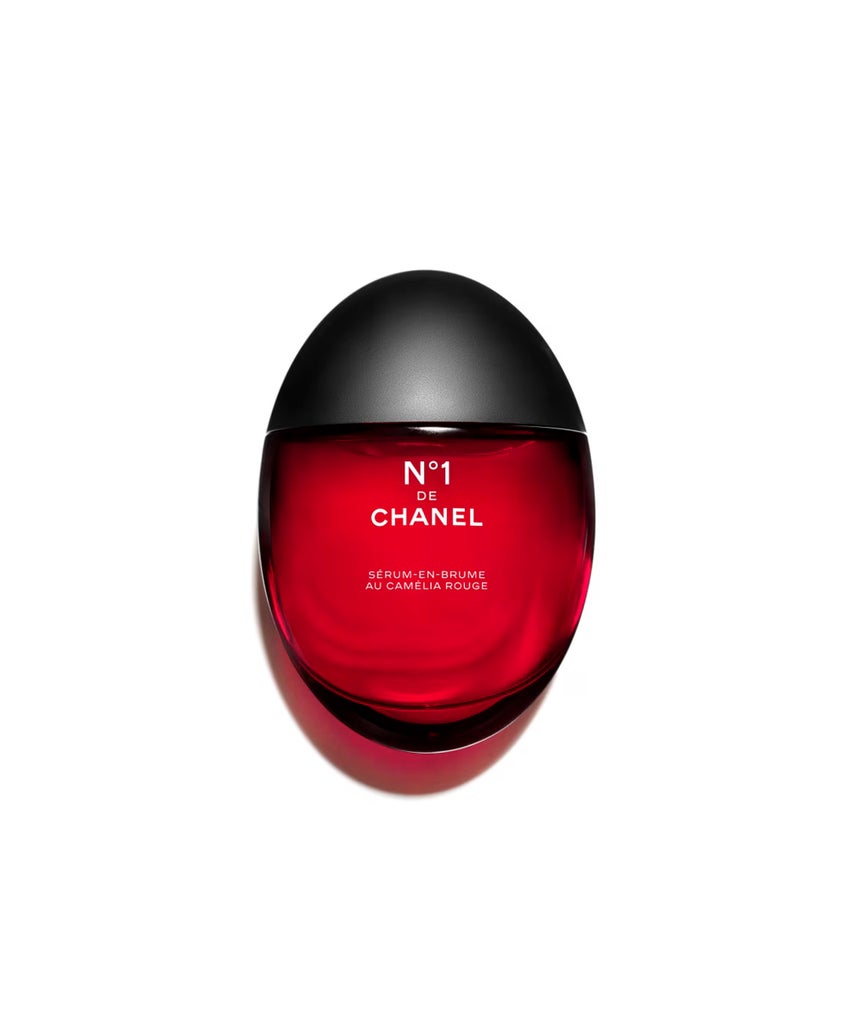
Face mists can feel quite fleeting, but not this newcomer from Chanel. It’s a bi-phase formula, meaning it’s half-oil, half-water (make sure to give the egg-shaped bottle a good shake before use), and releases an ultra-fine veil of moisture that leaves my skin looking dewy for hours without feeling sticky. I credit this to red camellia extract, an antioxidant that soothes and defends the skin barrier against environmental pollutants. Out of all the mists I’ve tried, the hydrating benefits of this one feel the most long-lasting. I can see myself using this well into the winter. A little bit also goes a long way, too; the nozzle has a pretty strong projection, so two pumps is enough to coat my entire face.
The Inkey List Hydro-Surge Dewy Face Mist, $13
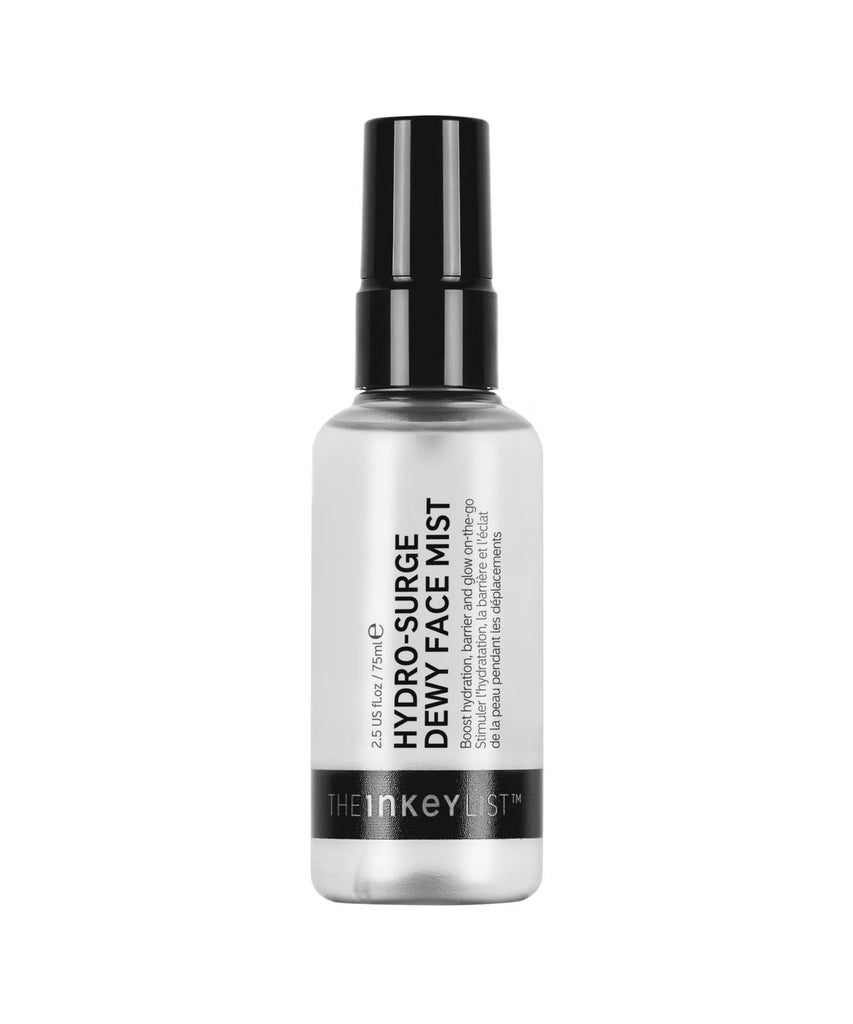
I like to think of this one as a tall glass of water for my skin. I’m quite happy to spot glycerin — a humectant that draws moisture to the surface of the skin — in the list of ingredients. It also features refreshing cucumber water and mineral-rich seawater, which further boosts hydration. My skin feels firm and bouncy after a couple of sprays, and out of all the mists I’ve tried, this one feels the least sticky. The affordable price point means you won’t feel bad about spritzing it all over the face and body. The only reasons this didn’t claim the winning spot? The nozzle spray disperses a lot of product at once, so it can get a bit messy if you already have makeup or SPF on. There’s also a faint plastic-y scent but it’s not noticeable enough to be annoying.
Aesop Immediate Moisture Facial Hydrosol, $27
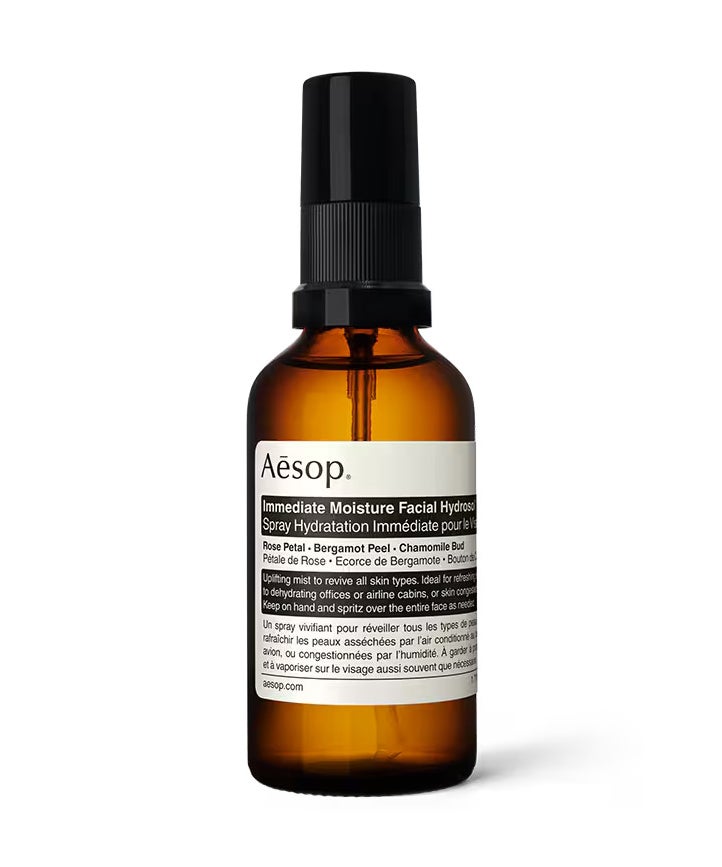
This is, in my opinion, one of Aesop’s most underrated (and affordable) offerings. First things first: the rose and bergamot scent reminds me of aromatherapy products you’d get in a luxury spa. Fittingly, the mist does contain hydrating rose petals, invigorating bergamot peel and calming chamomile buds. The texture sits somewhere between a mist and a serum, leaving my skin immediately looking softer and dewier. It’s the perfect little treat to perk my skin up, especially when it’s looking a bit dull thanks to “office air”.
Elemis Pro-Collagen Toning Mist, $65
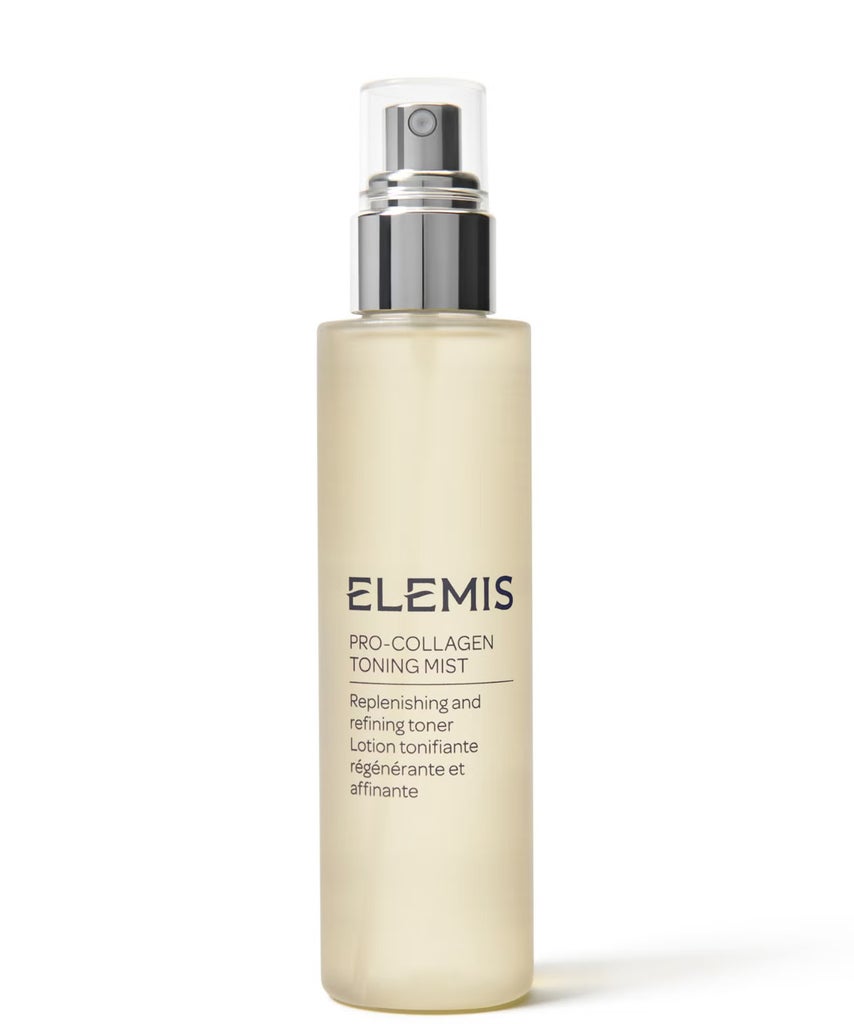
I’ll start with what I liked about this new toning mist: the applicator does an excellent job at misting the skin thoroughly; I feel like I’m stepping into a moisture cloud every time I give this a spritz. The unique selling point is the brand’s proprietary padina pavonica algae, which prevents moisture loss in the skin barrier, alongside marine ferment, which helps reduce shine and minimize the appearance of large pores. Finally, gluconolactone gently exfoliates and removes dead skin cells. I do notice less oil production when I’ve used this mist on a hot day. The catch? The finish leans a bit tacky for my taste and there is a faint yeasty scent (probably due to the marine ferment).
Laneige Cream Skin Cerapeptide Mist, $12
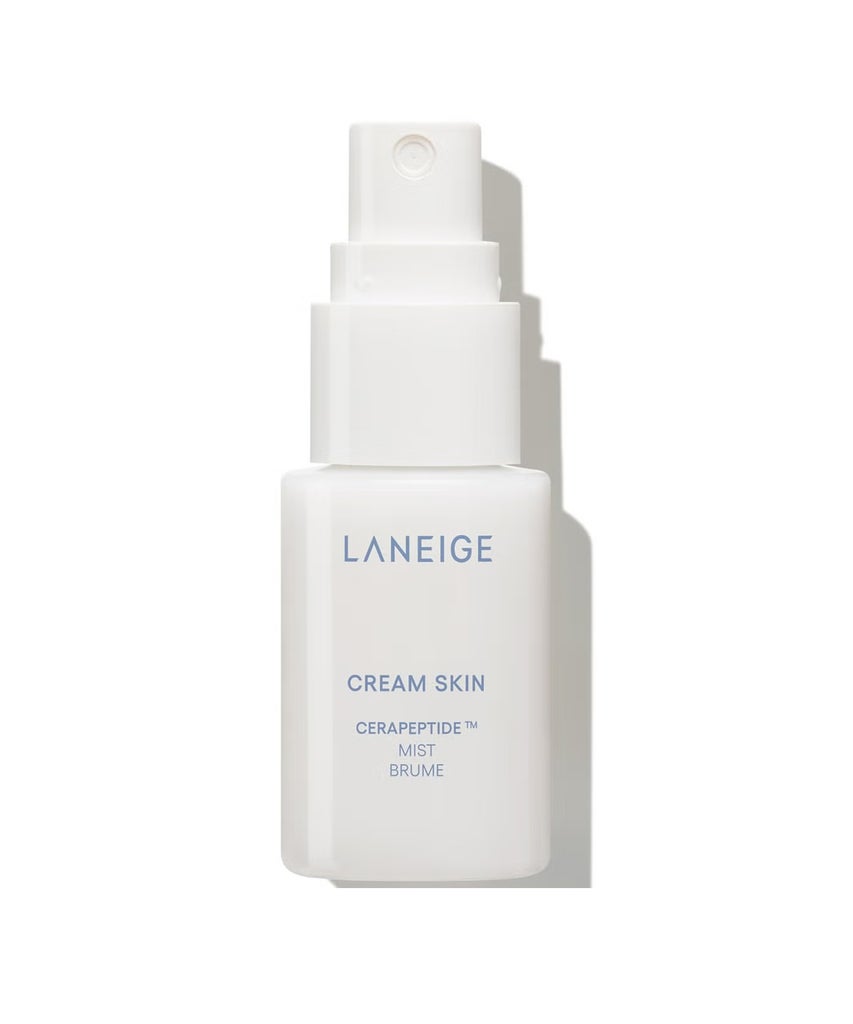
If you’ve tried Laneige’s Cream Skin Cerapeptide Toner, $36, you’ll very much enjoy this mist; it’s pretty much the same product repackaged in a tiny spray bottle. It leaves my skin feeling like it’s just taken a hydrating milk bath, thanks to a mix of peptides and ceramides that work overtime to increase firmness and promote collagen production. Since the bottle is so tiny and portable, this has been my go-to for long plane journeys as a final step to prevent my skin from feeling parched after applying sunscreen. (Wearing sunscreen on a flight is a non-negotiable for me.)
Shop our favorite face mists
This story was originally published on Refinery29 UK.
Like what you see? How about some more R29 goodness, right here?
The Best Double Cleansing Steps For All Skin Types
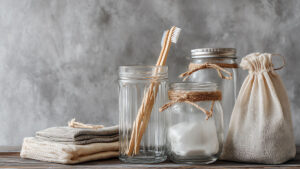
The 30-Day Zero-Waste Challenge: Simple Daily Actions for Beginners
Ready to shrink your trash footprint without upending your entire existence? The 30-day zero-waste challenge… The post The 30-Day Zero-Waste Challenge: Simple Daily Actions for Beginners appeared first on Earth911.
LivingReady to shrink your trash footprint without upending your entire existence? The 30-day zero-waste challenge…
The post The 30-Day Zero-Waste Challenge: Simple Daily Actions for Beginners appeared first on Earth911.
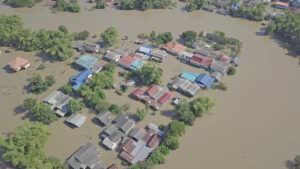
U.S. Flood Risk Is 67% Higher Than Historic Projections — Check Your Address
The flood risk landscape has dramatically worsened since 2020. Hurricane Helene, which sent floods tearing… The post U.S. Flood Risk Is 67% Higher Than Historic Projections — Check Your Address appeared first on Earth911.
how-&-buyThe flood risk landscape has dramatically worsened since 2020. Hurricane Helene, which sent floods tearing…
The post U.S. Flood Risk Is 67% Higher Than Historic Projections — Check Your Address appeared first on Earth911.
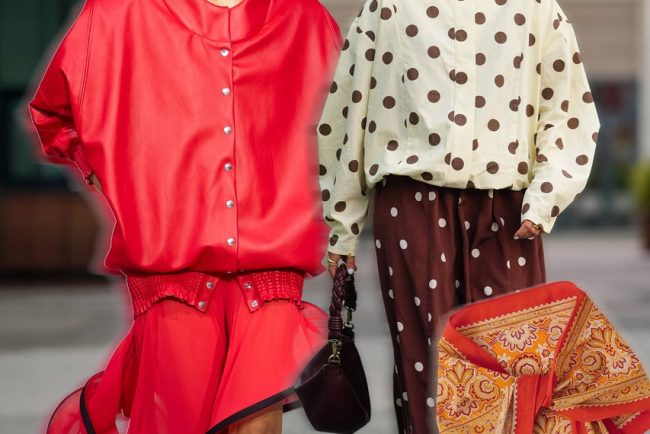
What Copenhagen Fashion Week Taught Me About Getting Dressed
Copenhagen Fashion Week opened with a dinner in the Nikolaj Art Gallery — a former church dating back to the 13th century. This season, it played host not only to the opening dinner but also to several shows, panels, and brand activations, including one from […]
FASHION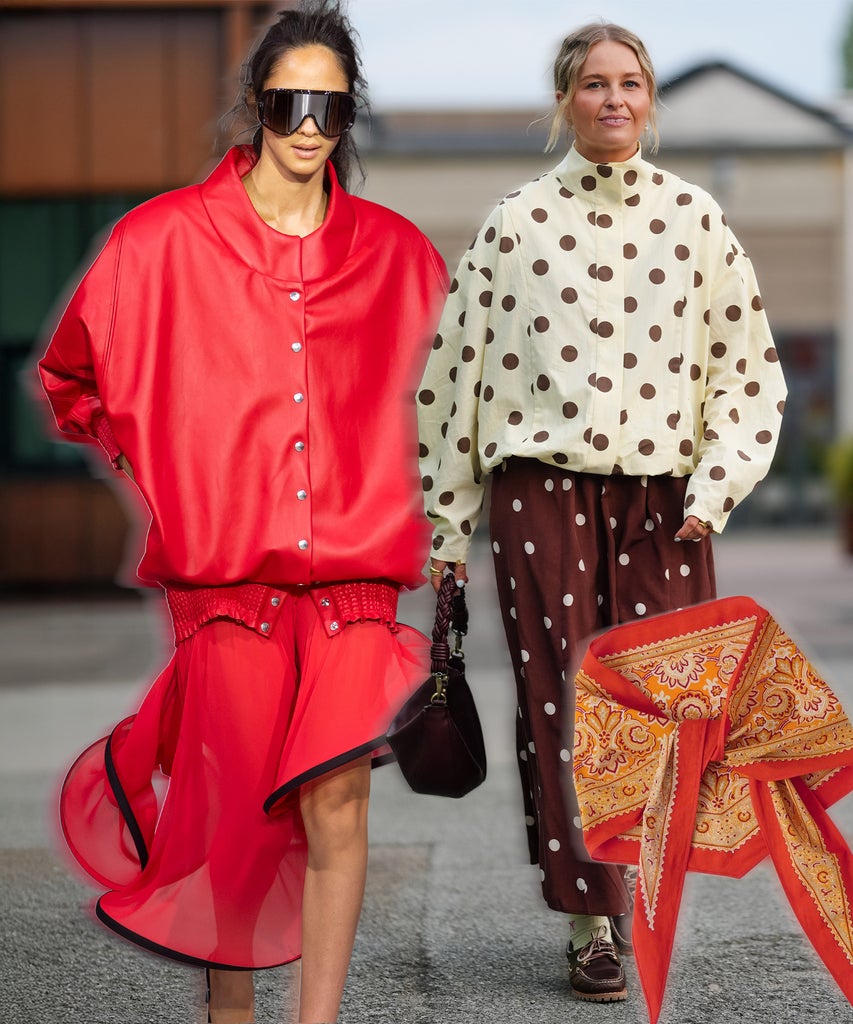
Copenhagen Fashion Week opened with a dinner in the Nikolaj Art Gallery — a former church dating back to the 13th century. This season, it played host not only to the opening dinner but also to several shows, panels, and brand activations, including one from Instax. That first night in the church set the tone for the week in more ways than one. The main course was pasta made from leftover bread — a nod to the council’s commitment to sustainability, carrying a deeper symbol of the communal act of breaking bread. That sense of togetherness continued through the shows and the showgoers, who brought an energy that was impossible to miss.
Each show drew its own eager crowd. At Sunflower, held in the courtyard of their offices, a burned-out car sat on a square platform that models weaved around. Outside, the audience pressed in so tightly it was nearly impossible to see the clothes — which, in theory, defeats the purpose of a fashion show. But here, the draw was as much about soaking in the atmosphere as it was about spotting a fetching fireman jacket or sharply tailored, strong-shoulder suit. At Marimekko, which was staged outdoors with only a thin rope marking the perimeter, the crowd was equally lively — phones out, and ready to catch every moment.
Copenhagen as a fashion week can feel like the odd child out. Landing about four weeks before the marathon that is Fashion Month, which kicks off on September 11 with NYFW, it arrives a little too early to define overarching themes. A few emerged, though whether they carry through to the rest of the season remains to be seen.
For me, the word trend doesn’t quite sum up the week. Yes, there were recurring details — like the shoe of the summer, flip-flops — spotted at CMMN SWDN, Deadwood, and most notably Opera Sport, which sent out not only regular Havaianas but also 3D-printed versions that looked like they had been plucked from another dimension.
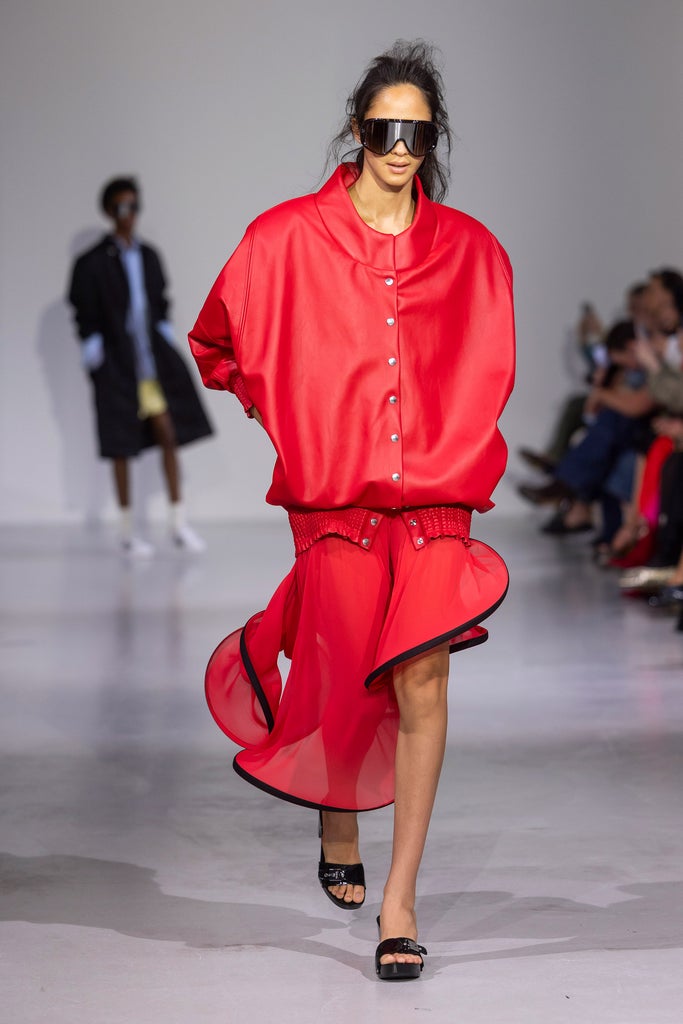
More broadly, the week felt defined by brands leaning into what they do best. Cecilie Bahnsen celebrated her 10-year anniversary with a show in an airplane hangar, where models drifted down the runway in white, cloud-like dresses as if they, too, were about to take flight. Nicklas Skovgaard continued his run of editorial, ‘80s-tinged silhouettes that struck the perfect balance between theatrical and wearable. These were pieces you wanted to own — not because they aligned with a trend, but because they looked irresistibly cool. Think an airy, voluminous Cecilie Bahnsen number, a lipstick-red Skall coat, or Sunflower’s fireman jacket.
Again, overarching trends weren’t exactly easy to pinpoint. Though a few major themes felt substantial and may gain momentum as we move through the rest of Fashion Month. Among the standouts: Pajamas styled for day, chemise-inspired dresses that go far beyond countryside frolics, and perhaps most exciting, a modern reimagining of ‘80s elements that felt decidedly innovative.
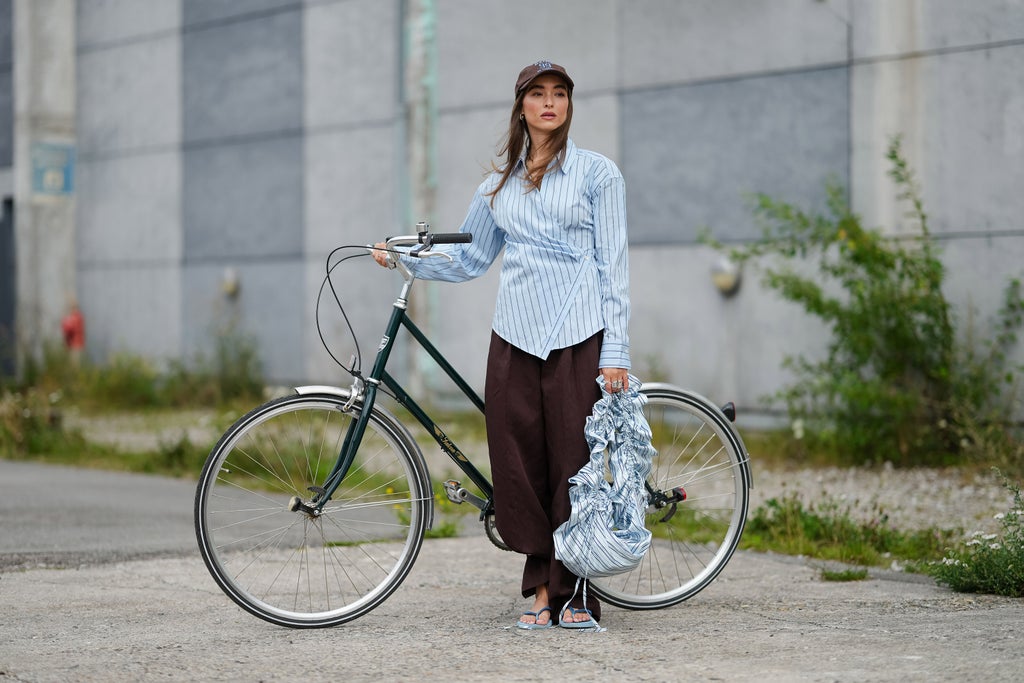
But the shoppable moments weren’t confined to the runway. Outside the shows, the street style was just as much a feast for the eyes. Much has been written about the Scandi girl aesthetic and the ability to look both laid-back and effervescent, which Copenhagen proved yet again. Styling touches like a pop of orange to brighten a look or unexpected finishes, like with a skull cap, felt instantly appealing and attainable.
From the runway to the streets, I left the week feeling inspired — and admittedly, with a case of the shoppies. Ahead, my breakdown of the top fashion takeaways, along with an edit worth adding to your cart to channel the best of Copenhagen.
On The Runway & Streets: Flip-flops
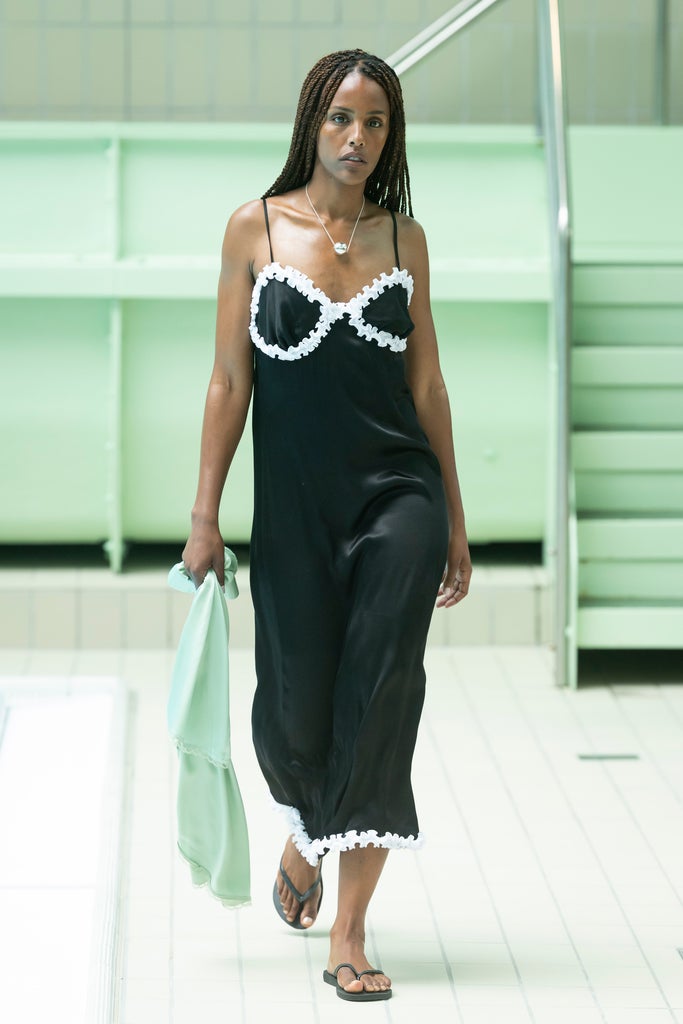
The shoe of the summer isn’t going anywhere. On the runway, flip-flops brought ease to elevated looks. On the streets, they lent a nonchalance to showgoers’ outfits — your most effortless finish with slip dresses, linen pants, and beyond.
On the Streets: Skull Caps
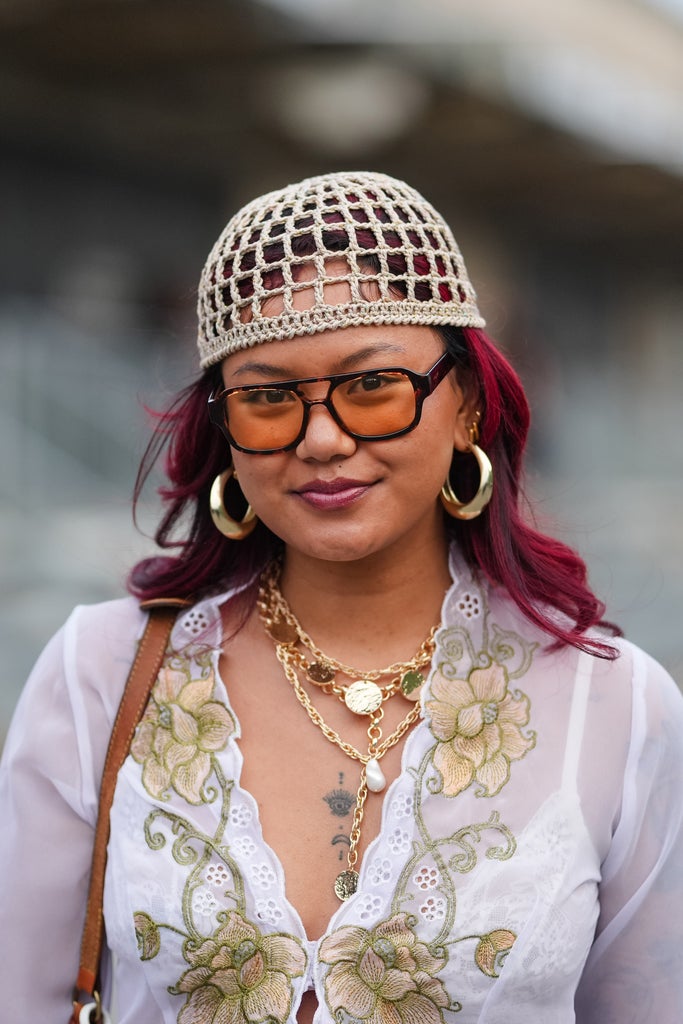
What balaclavas and bonnets were to winter, skull caps are to spring and summer. This compact accessory made a major impact, appearing daily at CPHFW and giving looks a distinctive finishing touch.
On the Runways: Pastoral Dresses
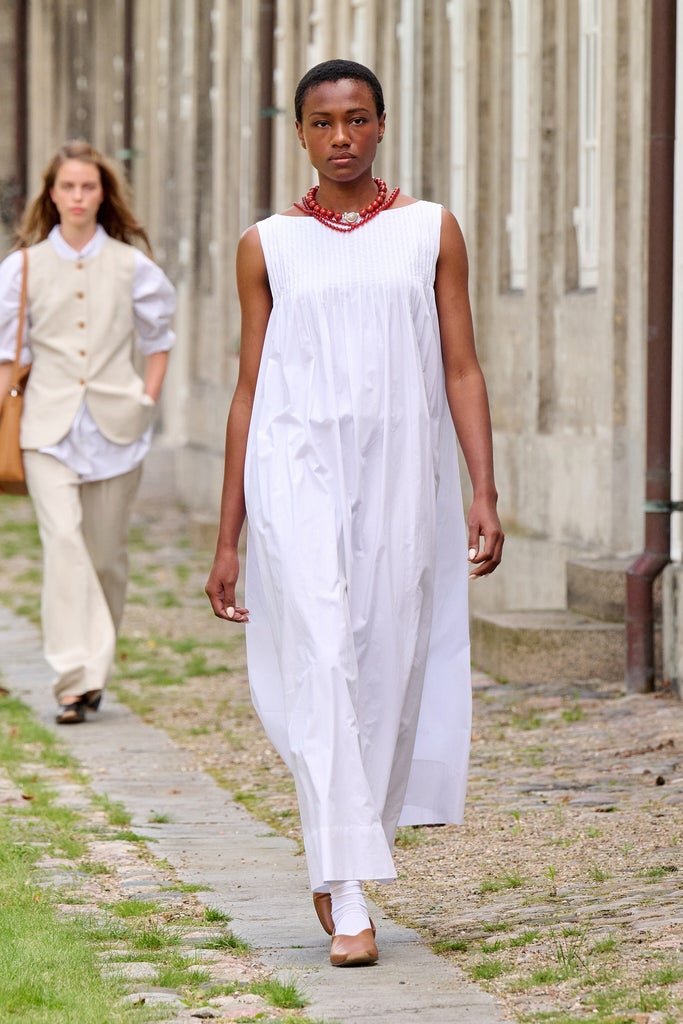
Designers leaned into loose, chemise-style dresses that evoked a European countryside sensibility (cue the daydream of wandering through a field of lilacs). Less TikTok milkmaid, more vintage cotton nightgown you’d stumble upon in a vintage shop — delicate, nostalgic, and surprisingly wearable.
On the Runways: Cotton Poplin PJs
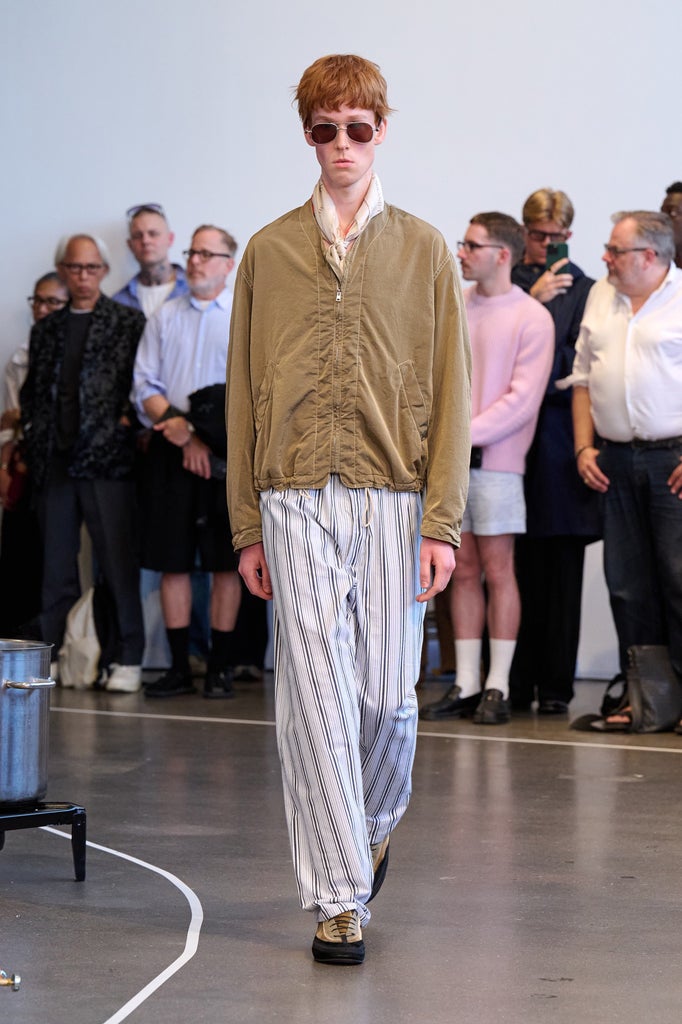
Designers gave pajama sets daytime credibility by pairing them with bomber jackets and structured outerwear for a street-ready edge. The key to pulling it off? Embracing the art of the matching set or coordinating cotton poplins, then finishing with sporty trainers or sleek loafers to ground the vibe and keep it from feeling too precious.
On the Runways: ’80s-Influenced Designs
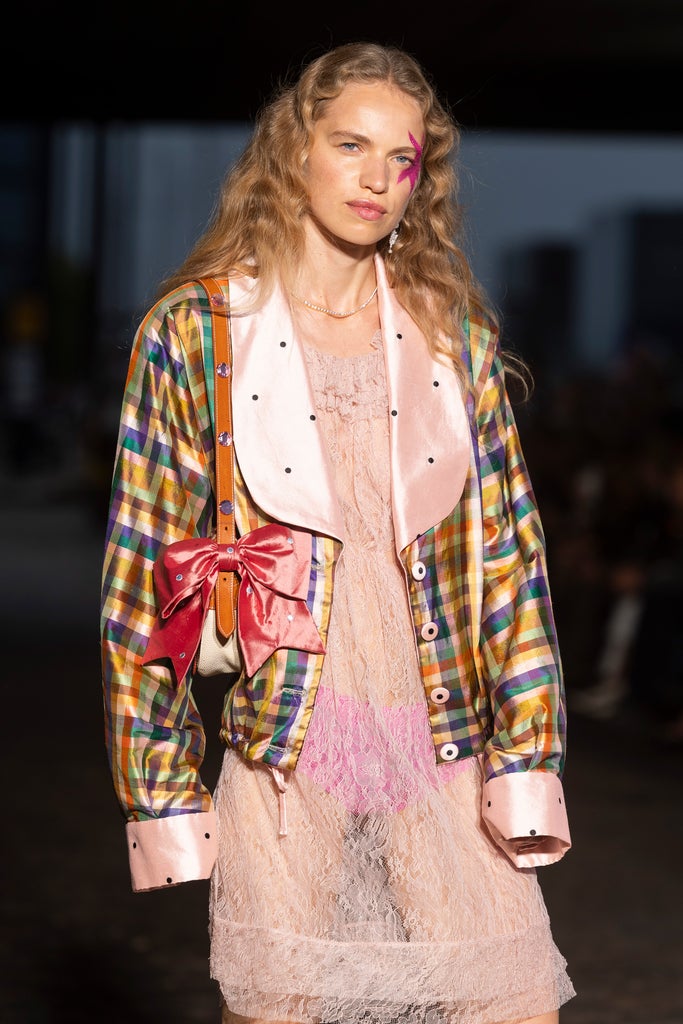
The ‘70s boho influence is giving way to the excesses of the ‘80s. Bold, sometimes clashing prints, electric colors, and sculptural shoulder pads all appeared on the runways — reworked into fresh, wearable takes that made the decade’s more over-the-top elements feel exciting again.
On the Streets: Polka Dots
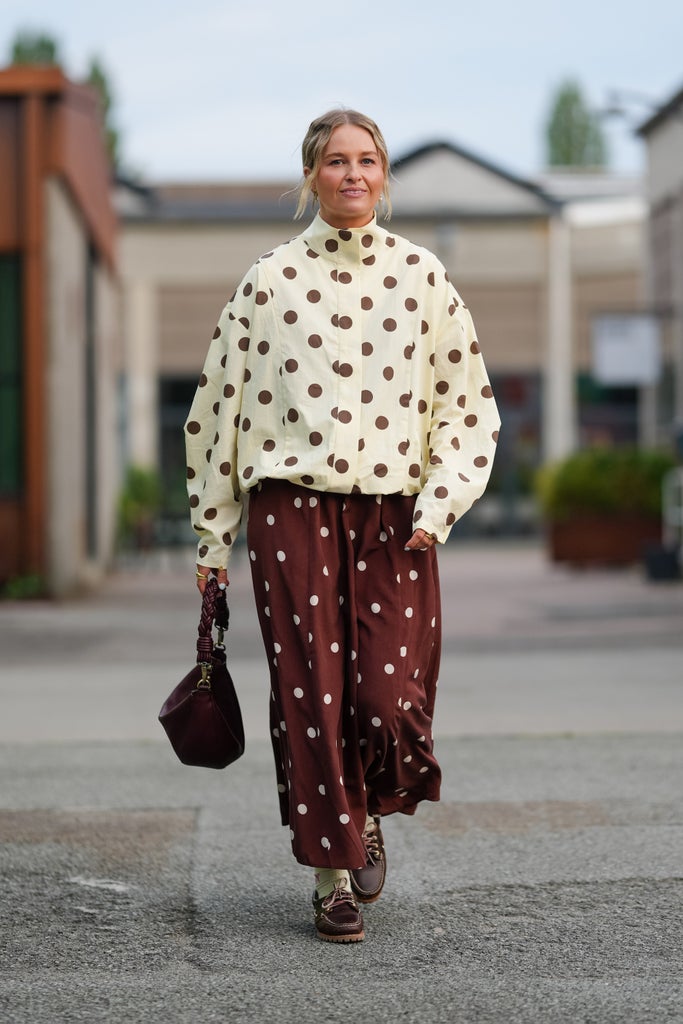
The playful pattern that resurfaces season after season made its way onto the streets of Copenhagen, where showgoers embraced it for an added dose of flair. From statement dresses to playful accessories, polka dots proved they’re still a favorite for anyone looking to punch up an outfit.
On the Runways: Fireman Jacket
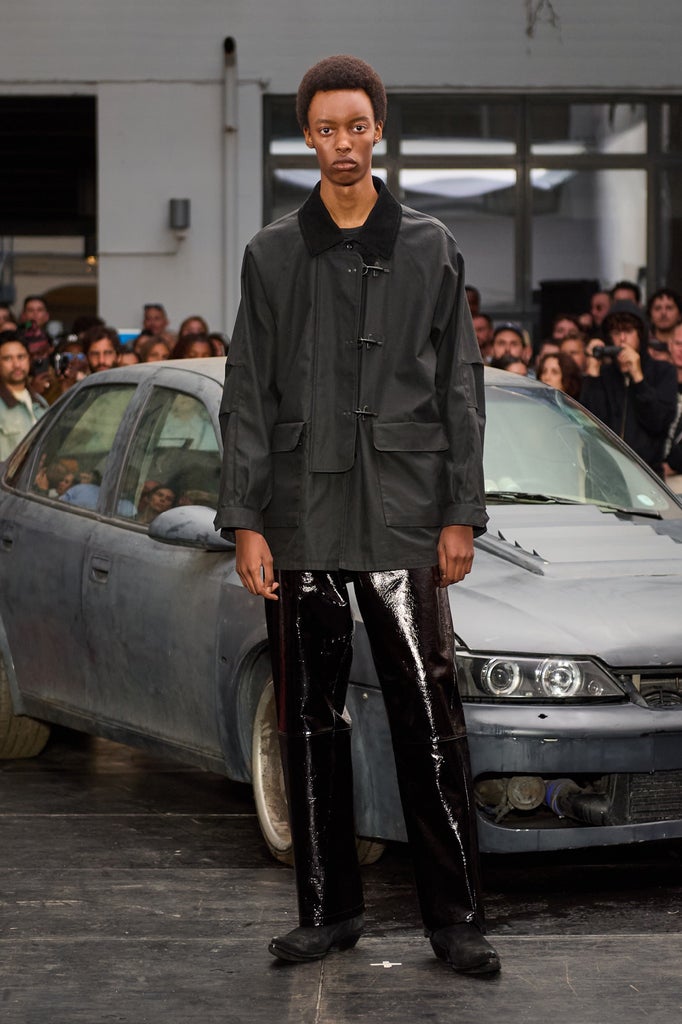
At first glance, this outerwear shape recalls barn-style jackets we’ve seen in recent seasons. But it’s the signature metal clasp closures that give the fireman jacket its distinctive, namesake appeal. Prepare for plenty of iterations to start popping up in new arrivals sections.
On the Street: Pops of Orange
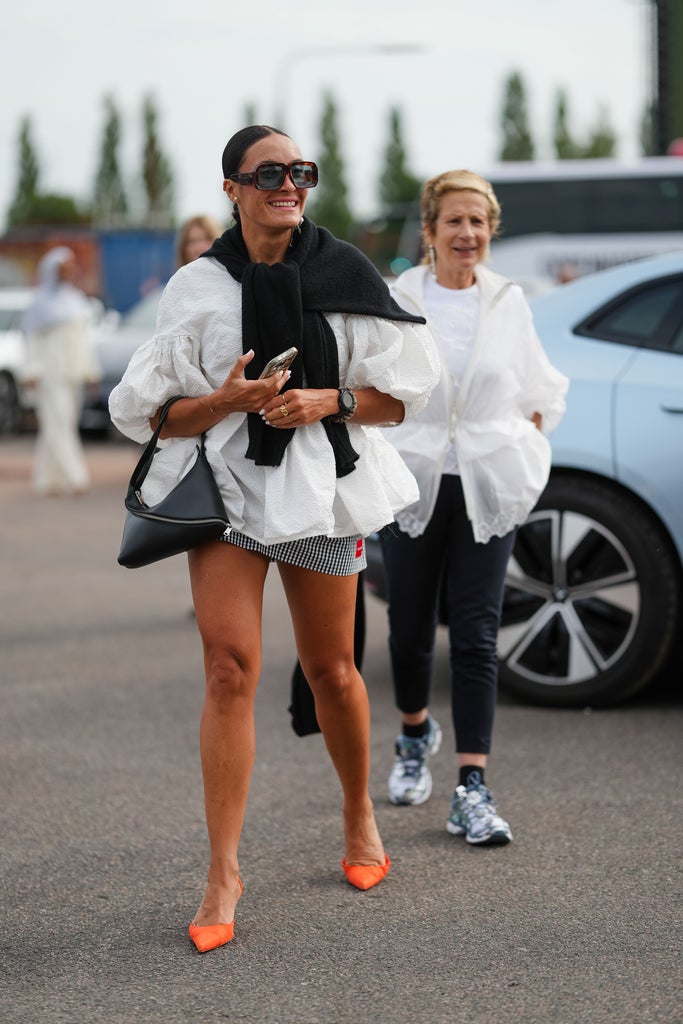
For a few seasons, pops of red have been the go-to accent for injecting drama into an outfit. This time, orange took center stage. Whether as a small detail — like a shoe to brighten a neutral look, or a blouse to invigorate an entire ensemble — this color trend added energy and vibrance to the week’s street style.
Like what you see? How about some more R29 goodness, right here?
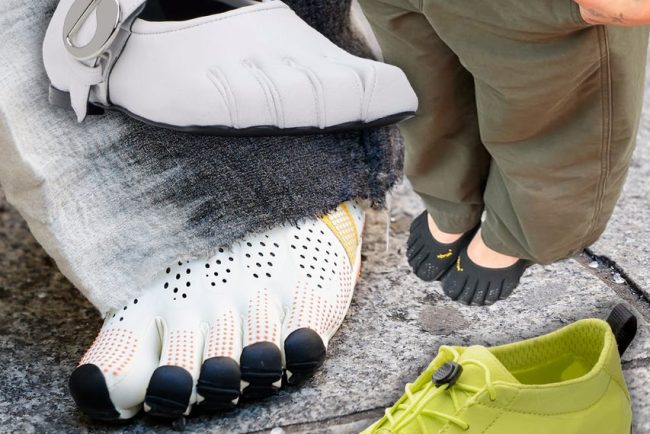
Fashion is Under Siege By Vibram’s Freaky FiveFinger Toe Shoes
When Vibram’s infamous FiveFinger shoes first became popular in the early 2000s, you couldn’t have paid me to wear them. I was a Converse-loving, Hot Topic-shopping high schooler who couldn’t have been further from their target market. Today, as a fashion editor living in New […]
FASHION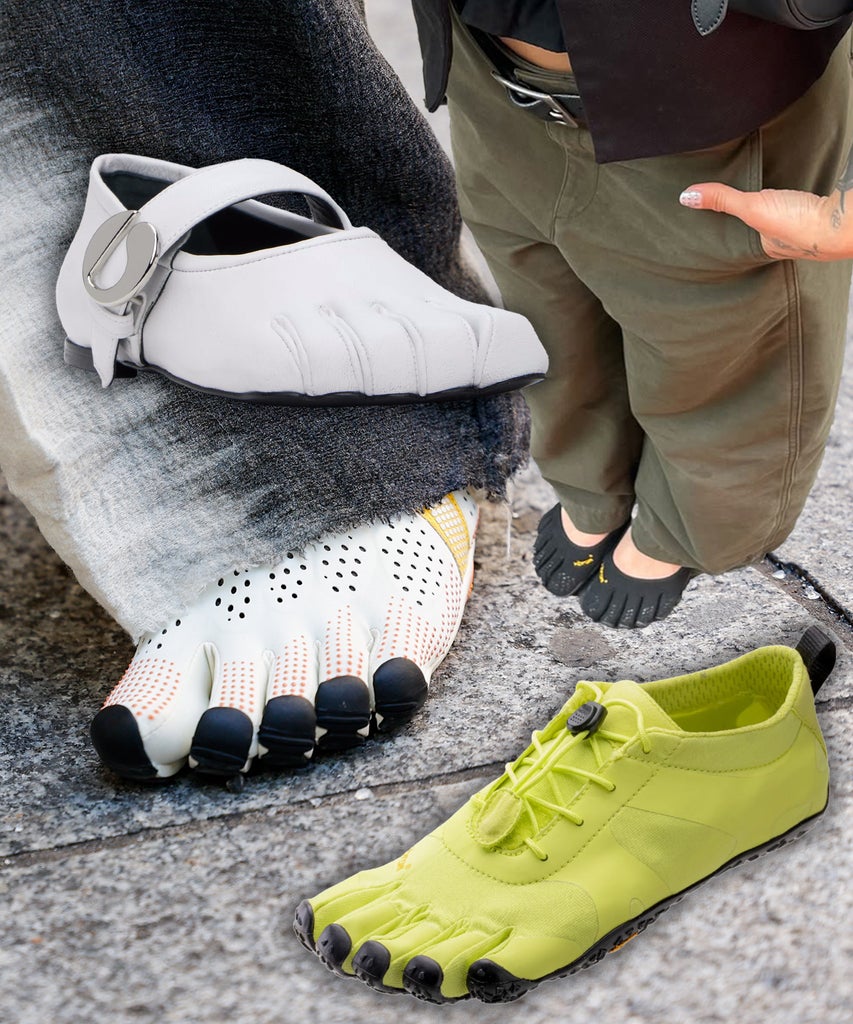
When Vibram’s infamous FiveFinger shoes first became popular in the early 2000s, you couldn’t have paid me to wear them. I was a Converse-loving, Hot Topic-shopping high schooler who couldn’t have been further from their target market. Today, as a fashion editor living in New York City, I’m even more removed from the brand’s usual demographic. But earlier this week, as I sat researching this story, I found myself contemplating a $870 pair of designer lookalikes. The shoe, as they say, is officially on the other foot.
The polarizing footwear style first hit the marketplace in 2006, featuring a toe-conscious silhouette that claimed to be the next best thing to walking around barefoot. Naturally, the granola community embraced them with open… um, toes? And soon, FiveFingers could be seen on every hiking trail and yoga retreat in the Pacific Northwest. Utilitarian to a fault, these babies were gorpcore before the term even existed.
Like a sleeper cell, five-toe shoes stayed in their lane, enjoying decades of quiet success until the time was right. In 2020, the flange-forward footwear began making its carefully planned attack on the fashion industry at large, with the launch of Balenciaga’s high-heeled Vibram collab. This collection combined the luxury label’s signature sock boot silhouette with the toe-centric contour Vibram is known for — mechanical-looking heels were the cherry on top of the futuristic designs.
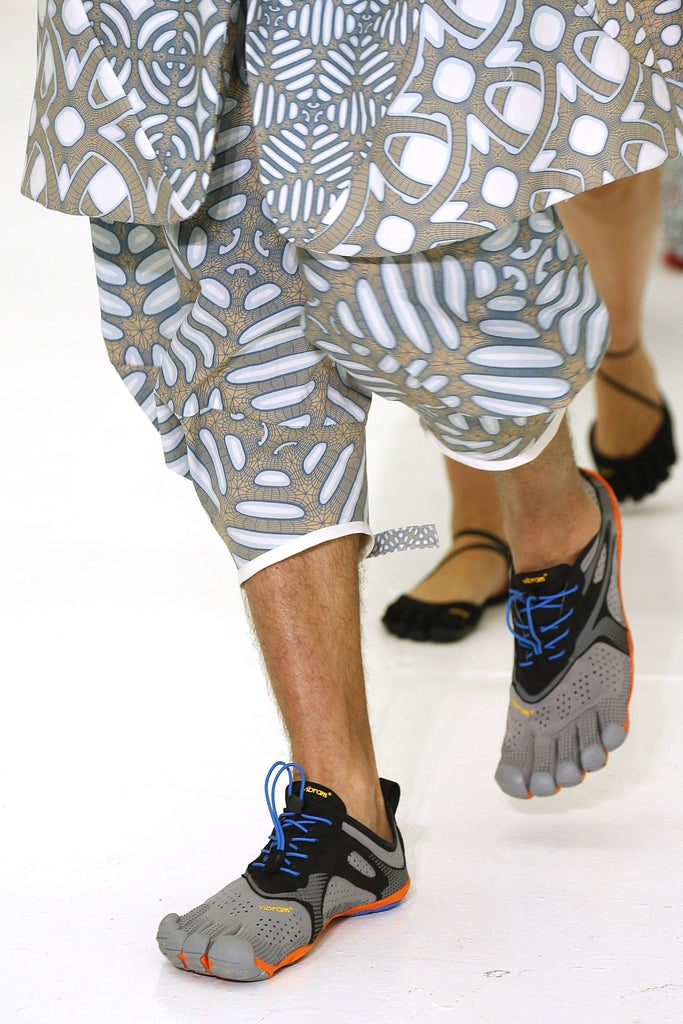
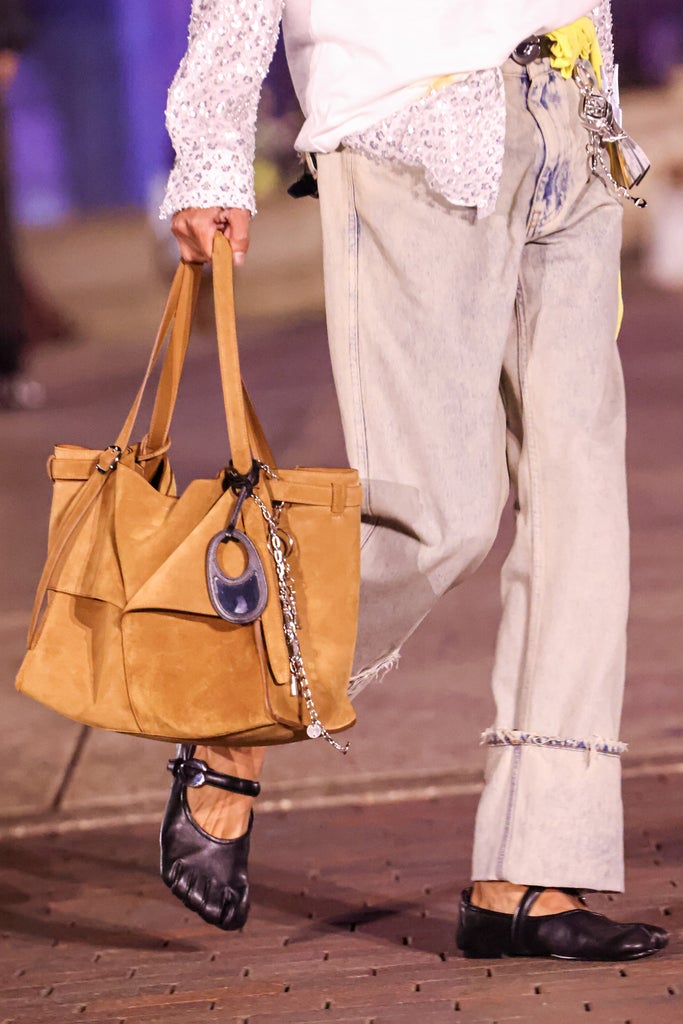
Although striking in appearance, the collection was overshadowed by an unprecedented global health event, and any hopes that the trend would take off fell flat. A full five years later, however, five-toe shoes have rather successfully infiltrated the sneaker space, piggybacking off the success of Maison Margiela’s iconic Tabis. Labels like Nike and Coperni released their own iterations, drip-feeding consumers with toe-forward shoe styles until the digits of fashion’s elite were under a full-scale siege. Now, interest in Vibram FiveFingers is the highest it’s ever been. According to Lyst, the freaky shoes saw an unprecedented 110% spike in sales between April and June of 2025, securing them a leading role on summer mood boards.
In a world of prescriptive micro trends, increasing conservatism, and renewed body negativity, their appeal is simple: These anti-trend shoes push back against the heteronormative gender roles that are likewise on the upswing — a middle finger (or toe) in the face of traditional femininity. Their surrealist silhouette stands starkly at odds with the palatable day dresses of the trad wife set or the curve-hugging denim of Sydney Sweeney’s eugenics-coded American Eagle ads. And according to fashion psychologist Jennifer Heinen, these conflicting aesthetics are directly linked.
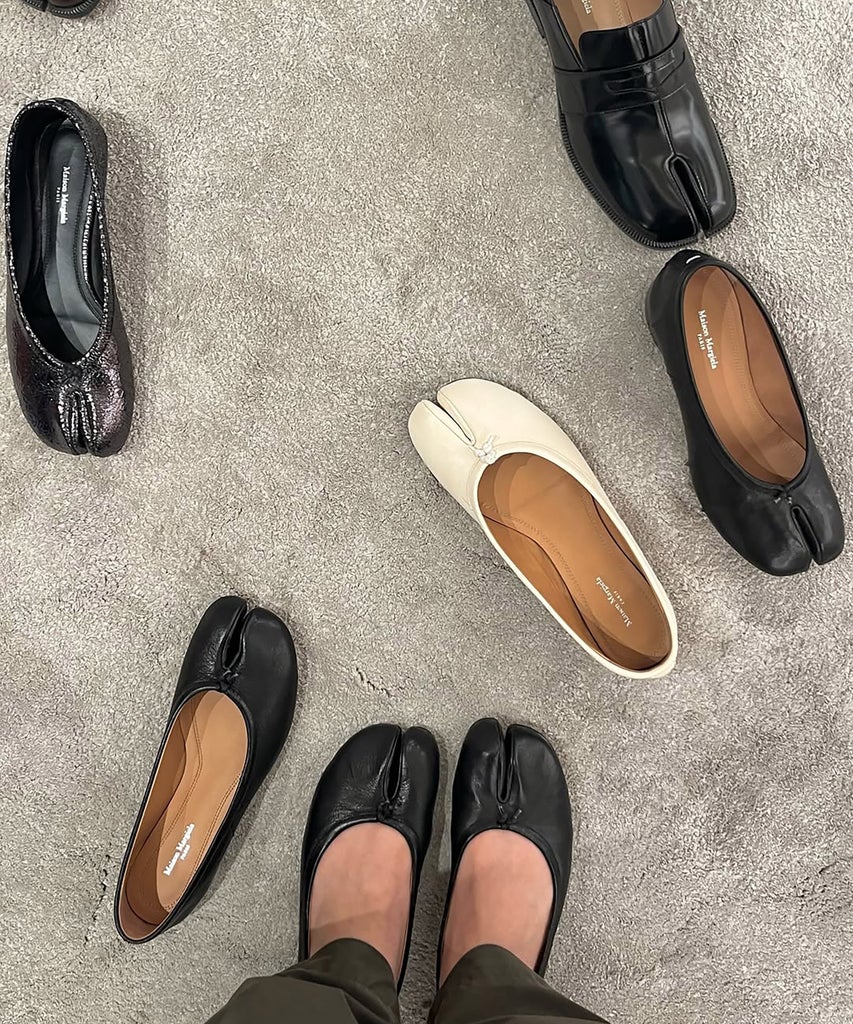
“From a fashion psychology standpoint, ‘ugly’ shoes mark a psychological shift away from visual submission,” Heinen tells Refinery29. “At a time when hyper-curated beauty is algorithmically rewarded, these shoes interrupt the aesthetic flow — on purpose. They’re anti-pretty, and that’s their power.”
Stylist Neelo Noory echoes this sentiment, saying: “It’s the ultimate fashion flex when you can take something as utilitarian as a five-toe shoe and make it look intentional,” she says. “With the right outfit, Vibrams read as this unbothered, comfy-casual-cool statement that says, ‘I know these are weird, and that’s why I love them.’”
Recent trend cycles have seen the pendulum swing away from painful high heels — shoes steeped in sexual symbolism that primarily benefits the observer rather than the wearer — toward shoes that intentionally rebuff the male gaze. Like their fellows (Crocs, Birkenstocks, designer clogs, UGG boots, dead fish sandals, etc.), five-toe shoes harness the unbridled empowerment of dressing for no one but yourself. And that is beautiful.
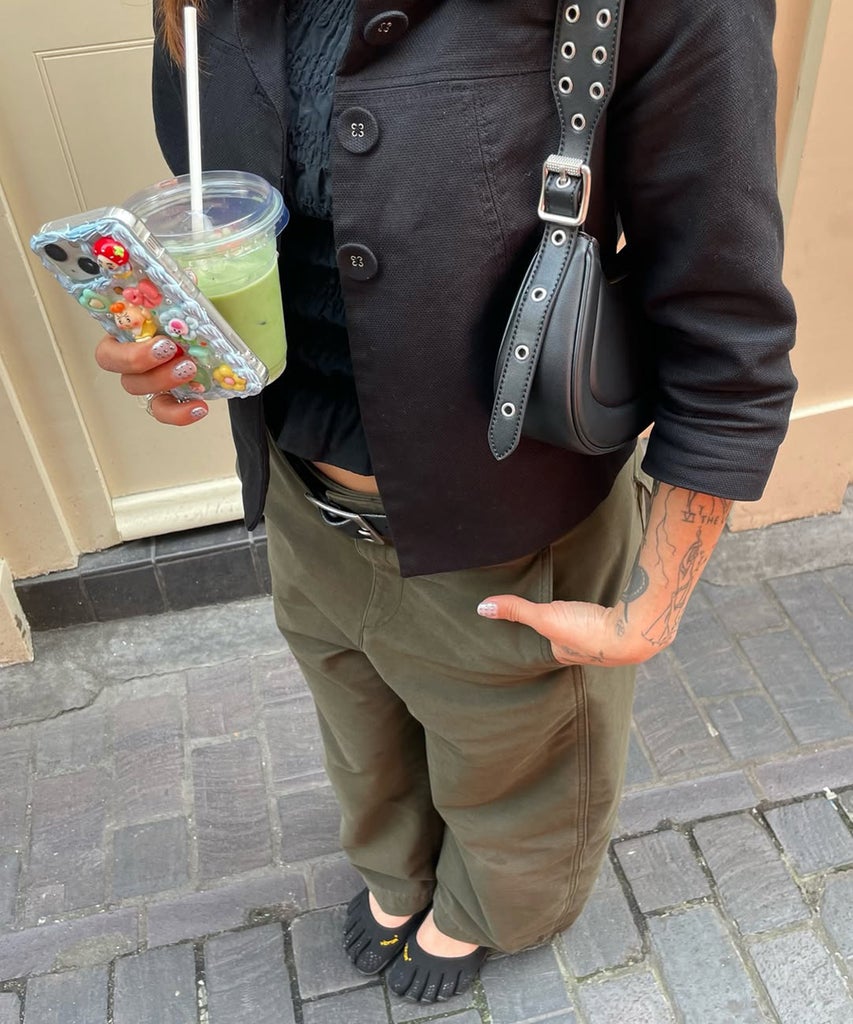
Heinen calls these shoes “tools of disidentification — a refusal to visually align with performative femininity,” she says. “They offer what some are calling ‘Ugly Girl Privilege’ — an intentional opting-out of desirability politics. When you wear something widely deemed unattractive, especially on your feet, you’re signaling: I’m not here to be easy to digest,” she continues. “They allow the wearer to reject the idea that their body must be pleasing, optimized, or ornamental.”
While this look is undoubtedly a “weird girl” trend by nature, toe-focused footwear is being embraced by designated “Hot Girls” across the social media sphere. Streetwear influencers and Instagram baddies alike are bringing these ugly-cute accessories to the mainstream, styling ballet-inspired iterations with baggy cargo pants and tiny crop tops, or “wrong shoe theory”-style with tent dresses or pleated trousers.
Fashion influencer and tattoo artist Toni Agost says she gravitates toward the strappy V-Souls (which she says “were super hard to get,” BTW) for both wearability and shock value. “Ugly-looking shoes make outfits interesting,” she says. “While being a delicate shoe, the toe detail makes them eccentric.” Like Heinen, Agost too has noticed a shift toward the fashionably bizarre in the larger fashion space. “I do think people don’t care as much if the outfit is conventionally attractive,” she tells Refinery29. “They care about expression and artistic freedom.”
Even so, Agost says their comfort level cannot be understated. “These shoes are so versatile, you can make them work with any aesthetic, but most importantly, they are my comfiest shoe.” This, too, is defiant in its own right, Heinen says. “The return of restrictive silhouettes and body-silencing trends is part of a larger regression into control and modesty,” she adds. “In this climate, ugly shoes operate as sartorial dissent. These choices communicate autonomy.”
“What we’re seeing now is a perfect storm: a collective fatigue with aesthetic conformity, rising political anxiety, and a collective craving to feel grounded in our bodies again,” she continues. “In times of social unrest, fashion often swings toward either fantasy or confrontation. Vibrams are the latter.”
Like what you see? How about some more R29 goodness, right here?
